Samsung The Frame LS03D (2024) is not just an ordinary TV that you place in the corner and forget about after two days. Right away, it’s clear that the manufacturer aimed for more than just displaying movies. First, the "Art" mode grabs attention – with just a few clicks, we can turn The Frame into a digital gallery, showcasing works that, combined with the matte screen, really resemble a real painting in a frame. Speaking of frames, we have the option to customize its colour to perfectly match our interior. Additionally, in the package, we’ll find a wall mount, which allows the TV to be hung virtually “flat”, enhancing the impression of engaging with a piece of art rather than a typical screen. The matte display provides great protection against light reflections, and paired with high brightness (650 cd/m²), it performs well even in full sunlight. On top of that, we have a VA panel with quite decent contrast and a refresh rate of 120 Hz, so watching sports or playing dynamic titles looks really smooth and pleasing to the eye. Adding to this are the gaming features – VRR, ALLM, and HGiG – indicating that Samsung also thought about console and PC fans. As a result, Samsung The Frame can serve as both a picturesque decoration for the living room and a rather sensible gaming monitor. The mentioned One Connect is another handy gadget – it allows us to hide all cables in one place, requiring only a thin cable connecting the TV to that magic box. If we like order, this is a solution designed for us. Another advantage is the Tizen system – easy to use, fast, and full of apps. While it may not have absolutely everything (e.g., the Tidal app), it still offers a wide range of options when searching for additional streaming platforms. Of course, there’s no rose without thorns. The lack of local dimming is noticeable in dark scenes, where the blacks become less distinct. We also have to remember that there’s only one HDMI 2.1 port, so if we want to connect more devices at 4K and 120 Hz, we might feel limited. Besides, the viewing angles are rather average, so it’s better if the most important viewer (that’s us) sits directly in front of the TV. For Dolby Vision lovers, it won’t be the ideal choice either, as The Frame LS03D only supports HDR10 and HDR10+. Additionally, the sound – like in most slim TVs – is average, so it’s worth considering a soundbar if we care about clearer bass and a deeper sound. Despite these weaker points, The Frame still makes a great impression. It’s striking, stylish, and versatile – suitable for both watching the latest hits and displaying reproductions of paintings on the wall. If we value an extraordinary appearance, high brightness, and want to play something with low input lag, then this model will be a perfect choice. And while it may not be the leader in cost-effectiveness nor a technological "monster" in terms of picture quality, it has something that is simply likable. It’s a piece of equipment that stands out with its unique character and can fit into any interior, attracting attention both in TV mode and digital art gallery mode.
- Matching (Score)
- Our verdict
- TV appearance
- Where to buy
- Contrast and black detail
- HDR effect quality
- Factory color reproduction
- Color reproduction after calibration
- Smoothness of tonal transitions
- Image scaling and smoothness of tonal transitions
- Blur and motion smoothness
- Console compatibility and gaming features
- Input lag
- Compatibility with PC
- Viewing angles
- TV efficiency during daytime
- Details about the matrix
- TV features
- Apps
- Playing files from USB
- Sound
Samsung The Frame LS03D vs SONY BRAVIA 3
Direct compare
The Frame / LS03D
BRAVIA 3 / K-(XX)S3

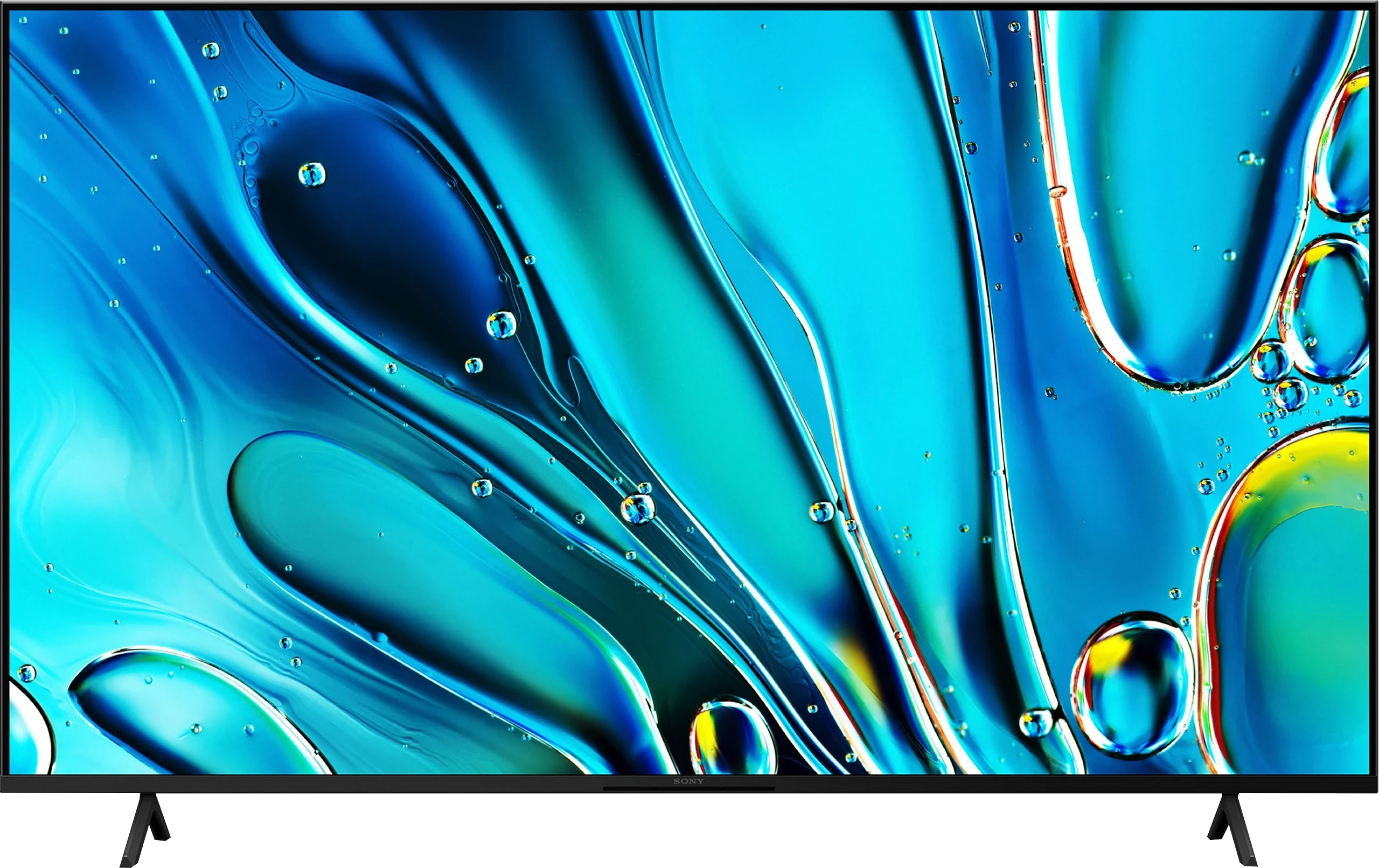
Panel type: LCD VA
Resolution: 3840x2160
System: Tizen
Model year: 2024
Complete the survey to find out the result

Panel type: LCD IPS
Resolution: 3840x2160
System: Google TV
Model year: 2025
Complete the survey to find out the result

Overall rating
7.0
6.0
Movies and series in UHD quality
6.9
5.4
Classic TV, YouTube
6.5
5.3
Sports broadcasts (TV and apps)
6.2
5.7
Gaming on console
8.2
6.4
TV as a computer monitor
7.6
6.0
Watching in bright light
6.5
4.9
Utility functions
7.8
6.6
Apps
8.7
9.6
Sound quality
5.8
6.5
Complete the survey to find out what fits your preferences
Advantages
Unique design and "Art" mode – the television perfectly blends into interiors and serves as a digital picture frame
Matte screen – effectively reduces light reflections
Customisable television frames – adjusting the look to fit the interior
Dedicated wall mounts included (Value approx. AUD 400) – the television can sit almost flat against the wall
High brightness (650 cd/m²) – excellent visibility even in well-lit rooms
VA panel – decent contrast
Good motion fluidity – 120Hz*
Supports VRR, ALLM and HGiG – full package of gaming features
Smooth tonal transitions – one of the best results in this category among tested televisions
One Connect module – minimises cable clutter, ensuring tidiness
Tizen system – responsive, intuitive
*Does not apply to the 43 and 50-inch variants (60Hz)
Google TV system – a massive library of apps and services
IPS panel with good viewing angles
Improved colours – (91% of the DCI-P3 colour gamut)
Dolby Vision support
Good upscaling – lower quality materials look surprisingly good
Great input lag and ALLM mode
Very good PC compatibility – supports chroma 4:4:4, excellent font readability
Two remotes included – a modern minimalist one and a classic one with a numeric keypad
Very good built-in media player – supports a wide range of files, even less common ones like HEIC
Slim bezels and modern design – a definite step up from the X75WL
Dolby Atmos and DTS:X support
Disadvantages
No local dimming – affects the quality of black, especially in dark scenes
Average viewing angles – the image loses quality when viewed from a greater angle
Average sound quality – flat sound without depth
Limited number of HDMI 2.1 ports – only one port supports full 4K@120 Hz
No Dolby Vision – the television only supports HDR10 and HDR10+
Tragic black - IPS panel without local dimming
Limited brightness (approx. 350 nits), HDR mode image is not very appealing
Issues with backlight uniformity
Google TV system can be sluggish
No recording function from built-in tuners to USB memory
Our verdict
Sony Bravia 3 is a television that brings several important improvements over its predecessor while still staying true to its core. The biggest change is the design – slim bezels and sturdy metal legs make it look modern and fit much better in a living room than the X75WL. The improved colours thanks to the PFS filter and really good upscaling are also a plus. It is particularly with lower-quality content, especially in classic SDR, that the Bravia 3 can show its best side – colours look pleasant, the picture is clear, and thanks to the IPS panel, viewing angles are at a very good level. For a ‘classic’ TV, where comfort from various viewing positions in the room and decent quality of everyday content matter, it is perfectly suitable. A huge advantage remains the Google TV system. During our tests, there were times when the interface did not work as smoothly as we would have liked, and some features could freeze. However, despite these imperfections, the presence of Google TV is a huge plus – access to thousands of apps and a full streaming library compensates for minor shortcomings. Unfortunately, what was weak in the X75WL remains weak here as well. The IPS panel has very low contrast and does not offer local dimming, which means that watching movies in a dark room quickly loses its appeal – black resembles more of a grey, which effectively detracts from the enjoyment of viewing. Additionally, the option to record content to USB, which was available in the predecessor, has been removed. It is hard not to notice this and not to add it to the list of downsides.
So, who is the Bravia 3 for? Primarily for those who want to enter the world of Sony televisions at the most affordable price while valuing the Google TV system. However, it is not the most attractive option in its class – competition in this budget can offer models with Mini-LED backlighting, which outperform it significantly in terms of contrast and HDR. Therefore, the Bravia 3 is worth considering, but mainly when there is a solid discount. At regular price, it will be very difficult for it to stand out against its more cost-effective rivals.
TV appearance





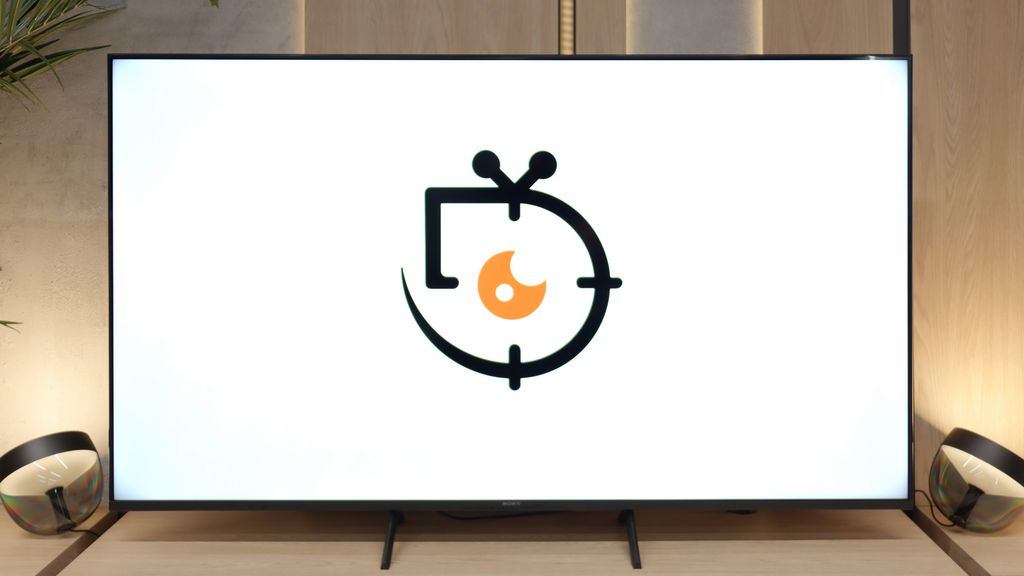
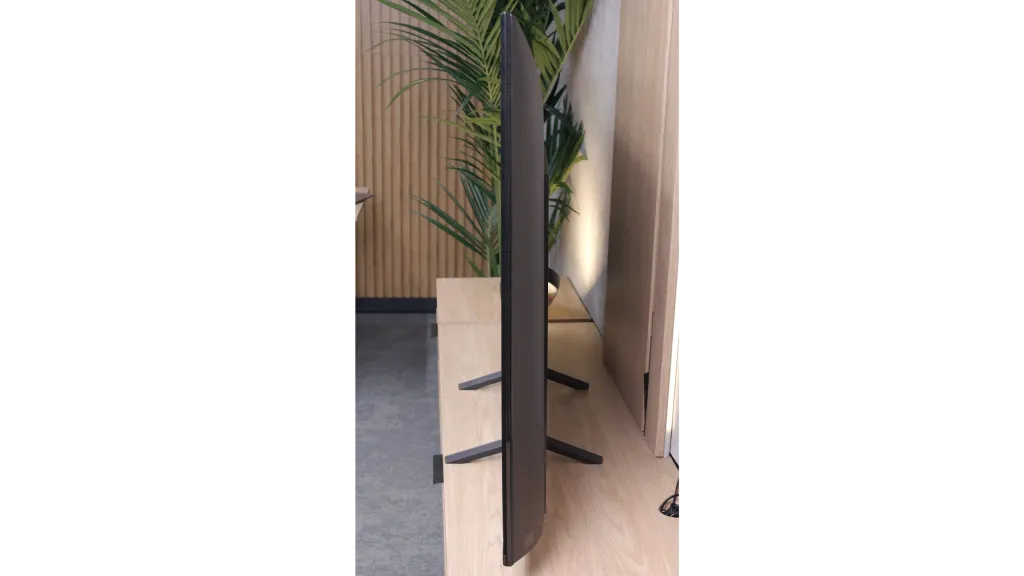
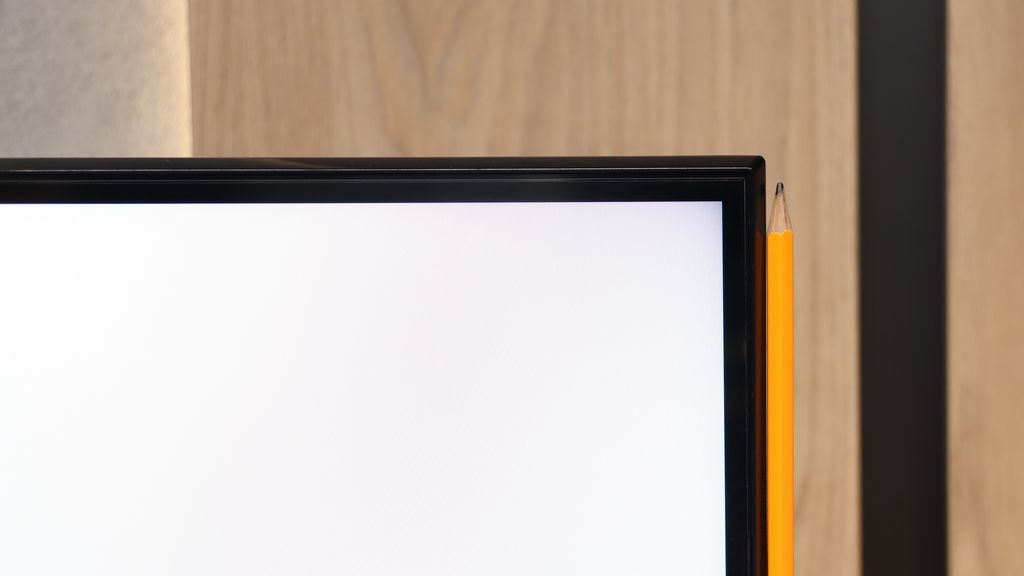
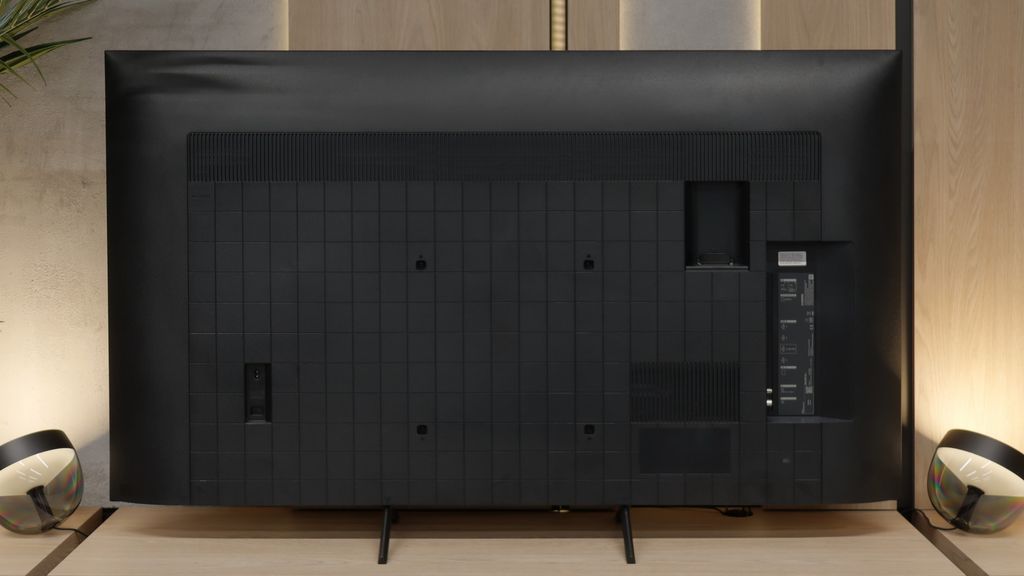
Contrast and black detail
5.6/10
2.2/10
Local dimming function: No
Local dimming function: No
Contrast:

Result
4,200:1

Result
4,800:1

Result
5,100:1

Result
5,300:1

Result
3,850:1

Result
1,150:1

Result
1,150:1

Result
1,050:1

Result
1,050:1

Result
900:1
Halo effect and black detail visibility:

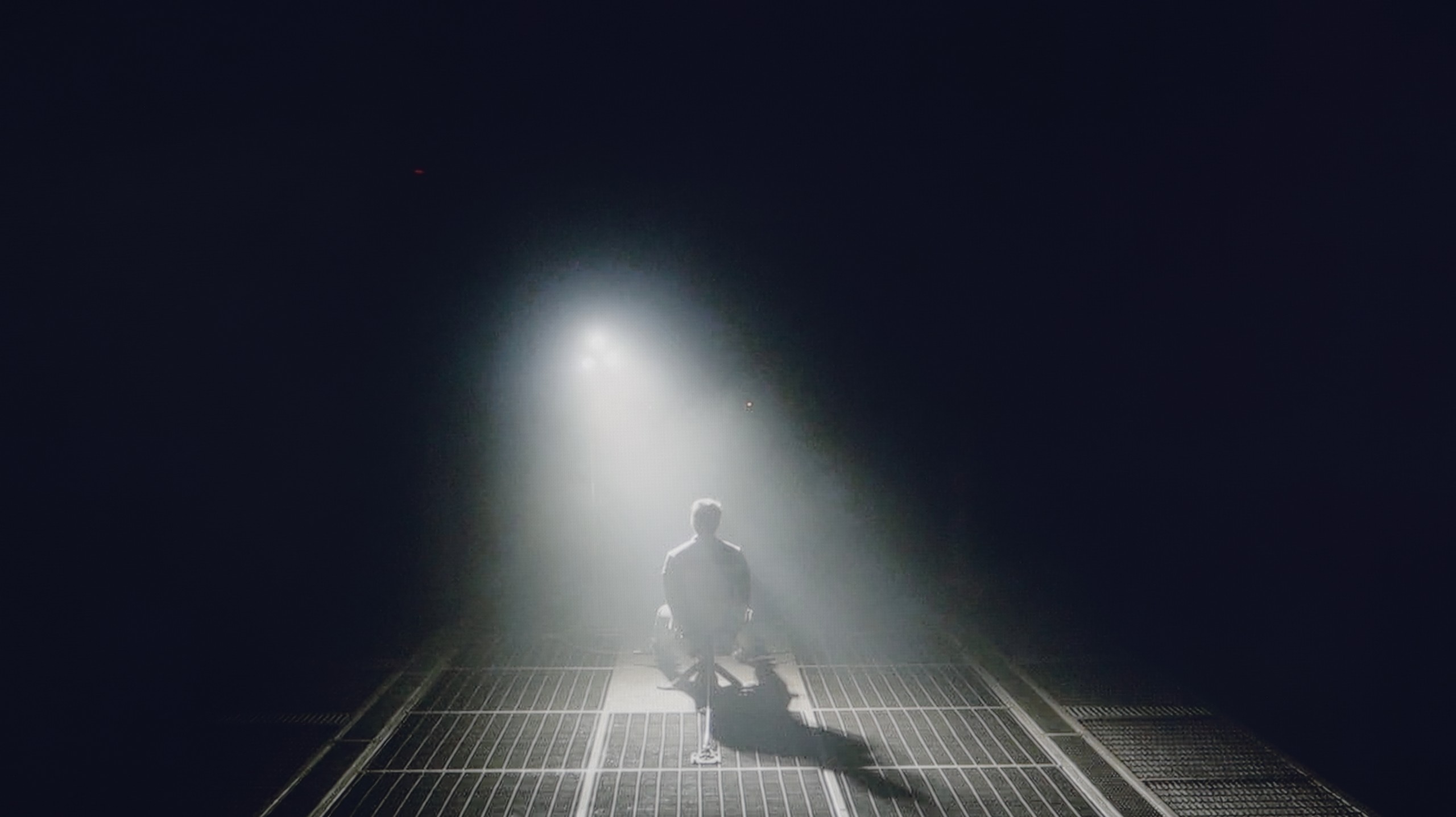
Samsung The Frame uses a VA panel, which provides quite a high contrast on its own. In our tests, the results ranged from 4000 to 5000:1, which will be perfectly sufficient for most users. However, the lack of local dimming becomes apparent, especially on more demanding test patterns. In dark scenes, it can be noticed that the black has a slight navy hue. During the day or in a well-lit room, this won't be a problem, but during an evening viewing, more demanding viewers may feel a slight dissatisfaction.
Bravia 3 in most variants, including the 65-inch model we tested, uses an IPS panel and unfortunately, this isn't the best news for those who value depth of image and truly velvety blacks. This technology has its advantages, offering decent viewing angles, but they come at the cost of very low contrast, which is particularly noticeable during evening viewing sessions when we expect the screen to go dark where it should. However, the list of problems doesn't end there. Our unit also showed noticeable imperfections in the blacks, which exacerbate the effect of their shallowness. For instance, in the scene with the helicopter, you can clearly see blooming in the corners of the screen and noticeable vignetting.
It's hard not to think that even a simple local dimming system could have salvaged the situation and added a bit of drama to the image, which is lacking here. Unfortunately, Sony has not opted for such a solution, and as a result, we have a repeat of last year's performance. So, Bravia 3 is not a television that will charm with cinematic depth of black. At night, instead of intense black, we are more likely to see grey pretending to be darkness, which may disappoint more discerning viewers.
HDR effect quality
6.4/10
4.6/10
Luminance measurements in HDR:

Result
679 nit

Result
663 nit

Result
712 nit

Result
698 nit

Result
726 nit

Result
316 nit

Result
327 nit

Result
369 nit

Result
236 nit

Result
379 nit
Scene from the movie “Pan” (about 2800 nits)


Scene from the movie “Billy Lynn” (about 1100 nits)


Static HDR10


Dynamic: HDR10+
Dynamic: Dolby Vision


HDR luminance chart:
SONY BRAVIA 3
HDR luminance
Samsung The Frame LS03D
HDR luminance
Samsung The Frame LS03D really does well with brightness. Results at the level of 700 nits make bright elements on the screen look impressive and detailed, whether they illuminate the entire screen or appear as tiny points of light on a dark background. In more demanding scenes, like the fourth sequence from the film Sicario 2, the blacks perform moderately, but we have already discussed this in the section on contrast. However, when it comes to brightness – this television definitely holds its own. An additional advantage is the quantum dot coating, which is QLED technology. Thanks to this, the coverage of the colour palette has been improved, although The Frame does not stand out in this regard compared to the competition.
Bravia 3 does not hide the fact that it belongs to a group of TVs that are rather modest in terms of brightness. Our measurements showed around 370 nits, which is a value balancing on the brink where any HDR effect can still be discussed. For some, this is an acceptable level, while for others it is more typical for SDR materials, where spectacular flashes or vivid contrasts are not expected. The impression is that this is not a TV for those focused on the highest image quality in demanding film content. However, this does not mean that there are no advantages to be found here. Compared to its predecessor, the X75WL, the Bravia 3 has gained an additional PFS filter, which works similarly to solutions known from QLED technology. Thanks to this, the DCI-P3 color gamut has been significantly expanded, reaching over 91 percent, which in practice results in more saturated colours and a more pleasing texture of the image. As a result, even everyday content looks a bit more vibrant, and films and series can surprise with their colourful presentation, despite limitations in brightness itself.
Factory color reproduction
7/10
5.8/10


Factory Mode
After calibration


Factory Mode
After calibration
Samsung offers several picture modes in its televisions, but without a doubt, Filmmaker Mode is the one that should provide the most natural representation of content. Unfortunately, as often happens with mass production, the differences between individual units can be quite significant, and our tested model did not escape a few issues.
In the case of SDR content, the white balance leaned heavily towards red, with a slight boost in blue. This effect was particularly noticeable in comparison photos – for example, in a photograph of a boy whose face was unnaturally flushed. The gamma, or brightness characteristic, also did not perform perfectly – the image was slightly brightened, which robbed it of depth.
In 4K HDR content, the white balance was once again dominated by red, this time combined with green. Meanwhile, blue clearly lost intensity, which could easily be seen on the Color Checker palette, where the colours began to "escape" in the wrong direction. The EOTF curve, responsible for brightness in HDR content, showed that the television tended to overly brighten the image, particularly in the darkest elements of scenes.
Overall, while it did not look terrible, it definitely required correction. Fortunately, Samsung offers extensive calibration options, which provides a chance for a significant improvement in picture quality. Therefore, we proceeded with professional calibration to unlock the full potential of this television.
We primarily tested the Sony Bravia 3 in movie mode, which immediately turned out to be the best choice among the factory settings. It's not a perfect picture, but compared to the eco mode that the TV suggests straight out of the box, the difference is evident and definitely better. In movie mode, there is a noticeable issue: the picture seems too warm, which is due to the lack of blue colour in the white balance. Nevertheless, in SDR content, the final effect can still be considered quite decent and satisfactory for everyday viewing. Much more serious errors arise in HDR materials. The Color Checker analysis showed significant deviations, and poor brightness management, combined with limited colour gamut coverage, further exposes the shortcomings of the picture in this mode. All of this makes HDR on the Bravia 3 look unconvincing and can ruin the impression left by the otherwise quite decent SDR content settings. Fortunately, it’s not a hopeless situation. Various errors can be somewhat mitigated, and some can even be completely corrected through professional calibration. That's why we decided to check how the TV would perform after such adjustments.
Color reproduction after calibration
8.1/10
7.5/10

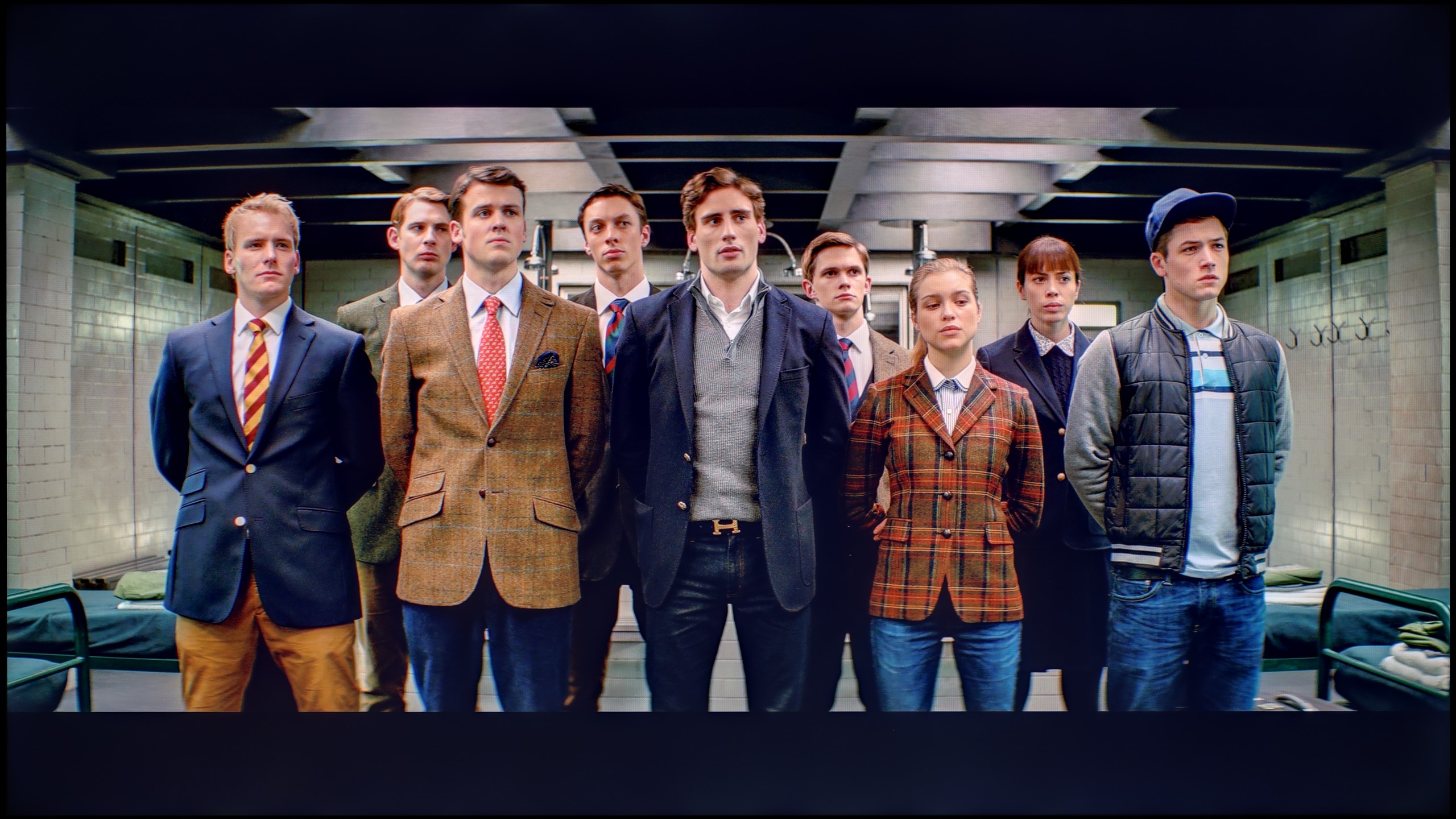


After professional calibration, the Filmmaker Mode showcases its full potential. The white balance in HD content is exemplary – errors at the level of 0.5 indicate almost perfect accuracy in colour reproduction. The image now appears natural, and the colours are exactly as they should be. In 4K HDR content, the effect is not quite as perfect, but it still maintains a really high standard. The colours are vibrant, well-saturated, and the overall image quality is impressive.
So where does the problem lie, given our praise for the colour reproduction? Unfortunately, the entire experience is disrupted by the brightness characteristics. The gamma in HD content looks decent, but in 4K HDR, it’s not as good. The EOTF curve shows that the television excessively brightens certain parts of the image, which is a result of design limitations. The lack of local dimming means that the television is unable to accurately control the differences between the brightest and darkest areas of the screen. This is a barrier that simply cannot be overcome in this model.
Nonetheless, after calibration, Samsung The Frame LS03D offers excellent colour reproduction, particularly in HD content, and the overall look is significantly better than before the settings were adjusted.
Calibration allowed us to extract significantly more from ChooseTV 3 than we could have expected at the beginning. First and foremost, it managed to address the deficiency of blue, which previously caused a noticeable warming of the image. After a slight adjustment in white balance, most errors in the Color Checker measurements for SDR content practically disappeared. The whites took on a natural tone, and brightness management in gamma stabilised to an almost ideal level, not exceeding the threshold of what the human eye can perceive. So it is safe to say that in SDR content, after a few adjustments in the settings, ChooseTV 3 performs really well. It fares much worse, although still definitely better than before calibration, when it comes to HDR content. The white balance has been brought in line, but the limitations of the IPS panel are insurmountable. The lack of local dimming means that even the smallest elements can be overexposed, which is immediately noticeable. Colour-wise, the effect has also improved, although it is far from perfect – many errors still exceed the threshold of four, and even five delta E units, remaining visible to the human eye. It was already clear earlier that ChooseTV 3 is not a television designed to impress with HDR quality. Nevertheless, it is pleasing that in SDR content, after calibration, the picture can look really great and in this category, the television pleasantly surprised us.
Smoothness of tonal transitions
9.7/10
8/10












This is one of the best televisions we've had the opportunity to test in terms of the smoothness of tonal transitions. Any potential imperfections are so minor that you really have to strain your eyes to notice them. They are subtle enough that we only deducted a symbolic fraction of points in this category. Undoubtedly, this is one of the greatest advantages of this model. It's possible that such a good effect is partly due to the matte screen coating, which gently masks any irregularities in colour gradation. The smoothness of tonal transitions in Samsung The Frame LS03D is at a level that will satisfy even exceptionally demanding users. Kudos to LS03D!
In terms of the fluidity of tonal transitions, Bravia 3 performs really well. In brighter scenes, we didn't notice any serious errors – the screen handles colour blending almost perfectly and doesn’t create artificial contours that can spoil the viewing experience. Similarly, in darker segments, there are no major issues with colour gradation, although another problem arises here. Strong brightening and uneven backlighting of the panel in dark scenes make it difficult to definitively assess the gradation itself, because the effect is spoiled by the unevenness of the image. However, if we focus solely on colour blending, the result should be regarded as very good.
Image scaling and smoothness of tonal transitions
7.1/10
7/10
Smooth transition function

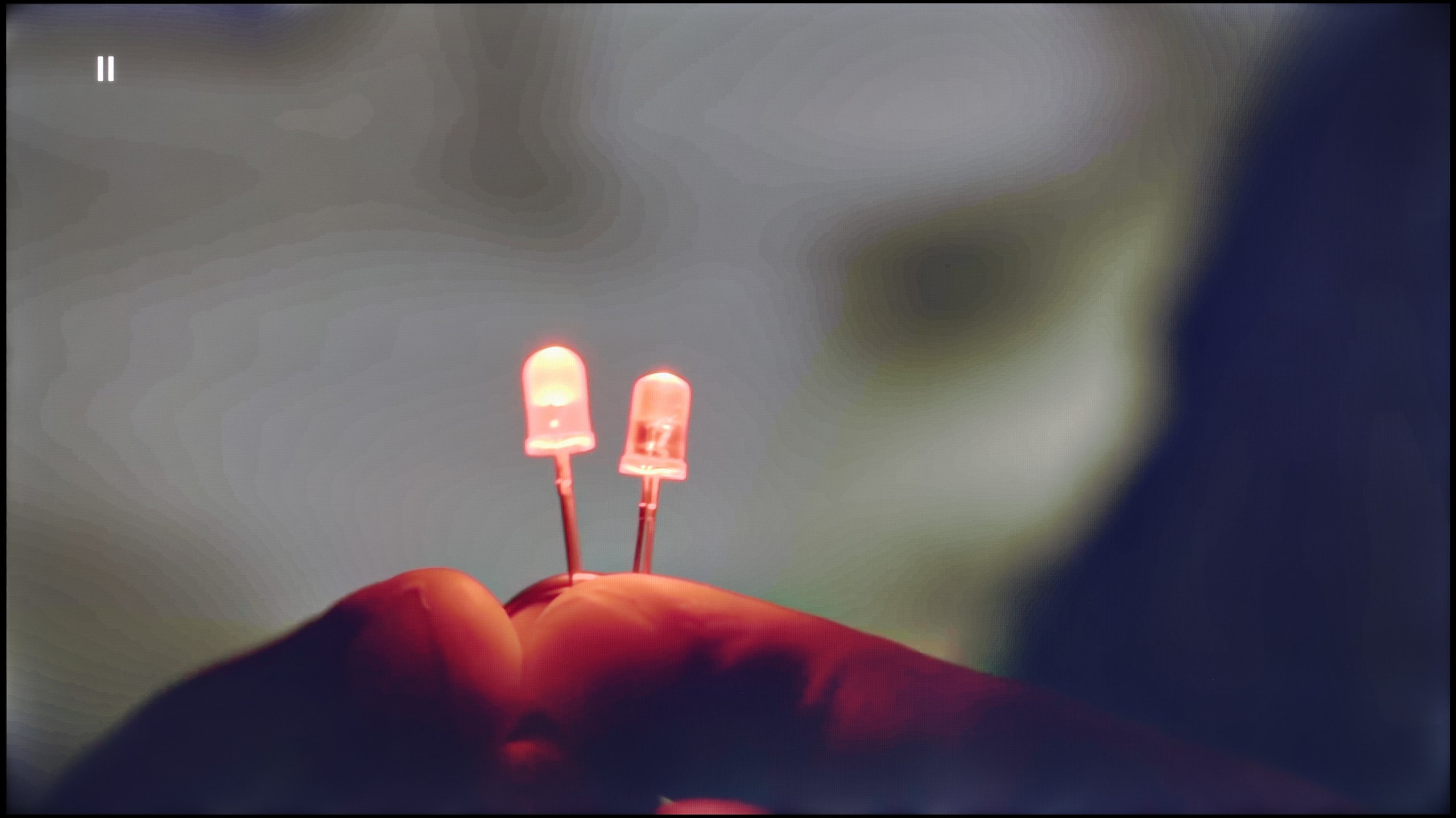
Image without overscan on the SD signal


It's time to check how Samsung The Frame LS03D copes with older, lower-quality materials. We already know that the smoothness of tonal transitions is at a very high level, so we were curious to see how the TV would handle smoothing them out.
The noise reduction feature in the “Standard” setting does its job well – tonal transitions are noticeably smoothed out, and the image doesn’t lose too much detail. However, it’s worth noting that this effect also smooths out film grain, so its usage will be a matter of individual preference.
When it comes to image scaling, the TV performed really well too. The tested image came out solid – the model was accurately represented, with clear details. The branches in the background, although slightly frayed in places, generally look natural and do not stand out as a flaw.
Bravia 3 brings something more to the Sony television family than just a shared name. It stands out primarily for its ability to enhance the quality of weaker materials thanks to the processor used. Of course, we won’t find the advanced XR chip known from more expensive models here, but nonetheless, it must be said that the image in lower resolution looked surprisingly good. The scaling worked effectively, and most areas of the screen were free from the typical excessive edge roughness found in budget constructions.
Also worthy of attention is the function that improves the smoothness of tonal transitions. In high setting, it works really well, effectively masking gradation imperfections without significant loss of detail. It does happen that the algorithm overzealously smooths elements that should remain sharp – for example, faces – however, in the overall assessment, the effect is beneficial. The best results were achieved precisely at the highest setting, and this is the option we could recommend to those watching lower-quality content.
Blur and motion smoothness
6.4/10
5/10

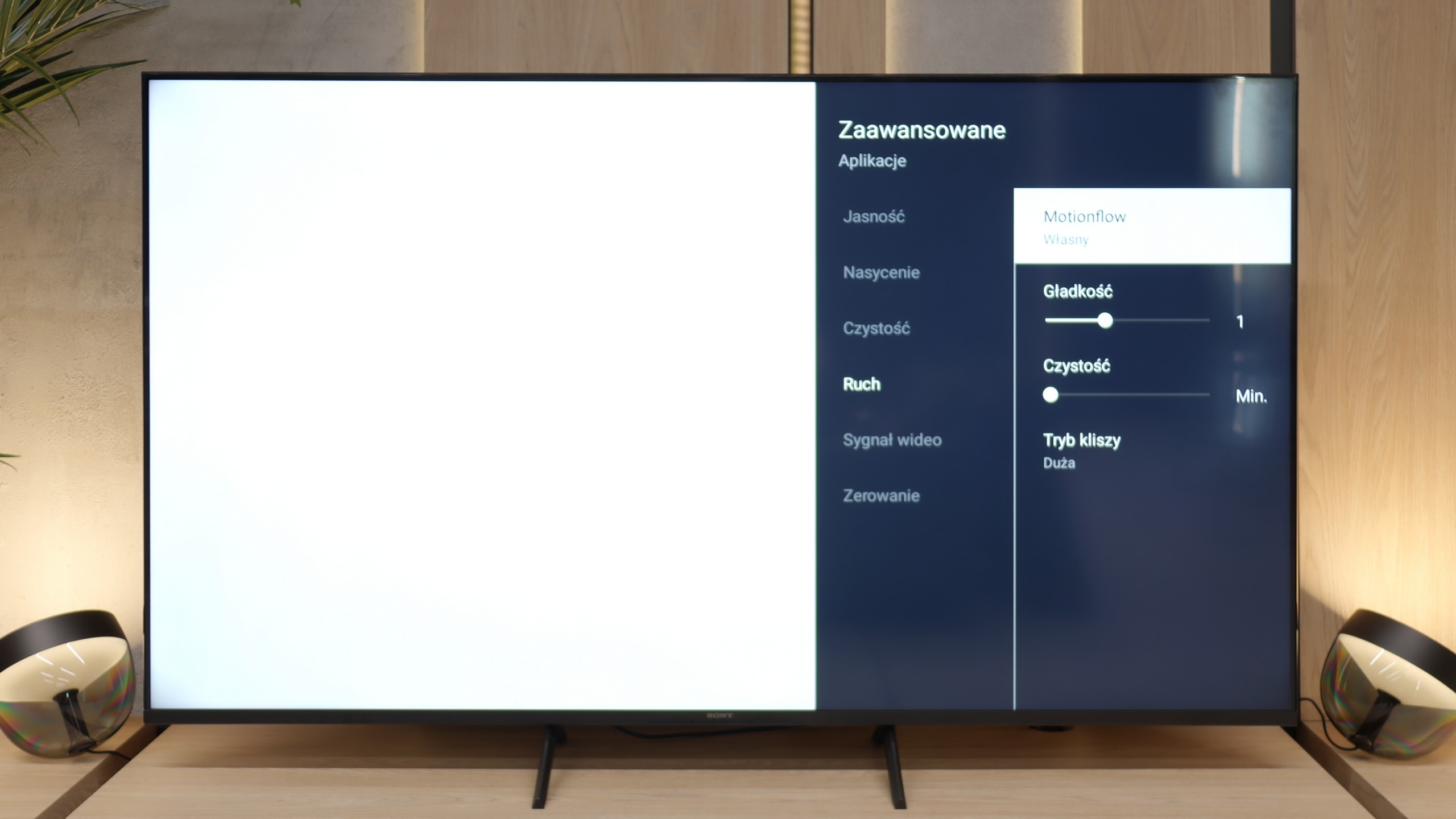
Blur (native resolution, maximum refresh rate):



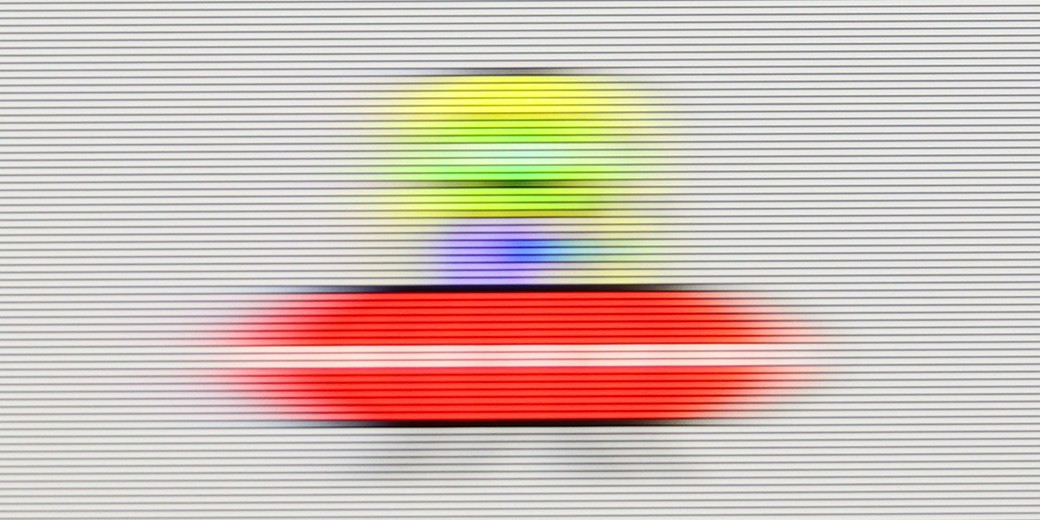
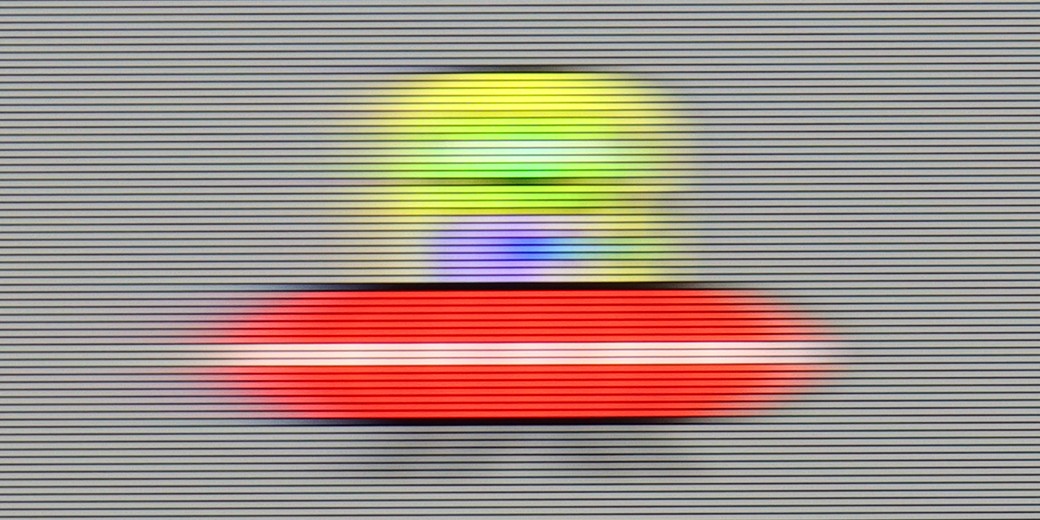
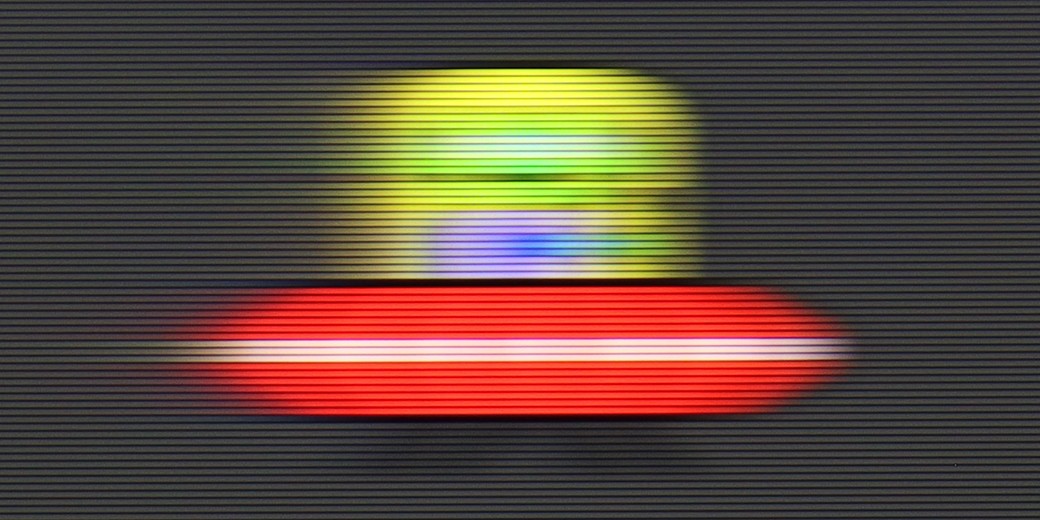
Blur (BFI function enabled):
Image flickers in this mode
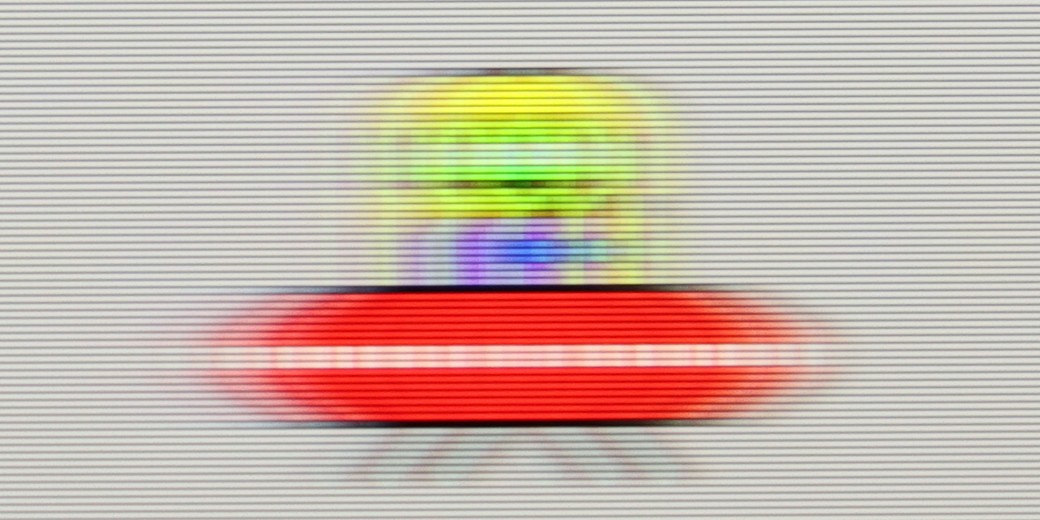
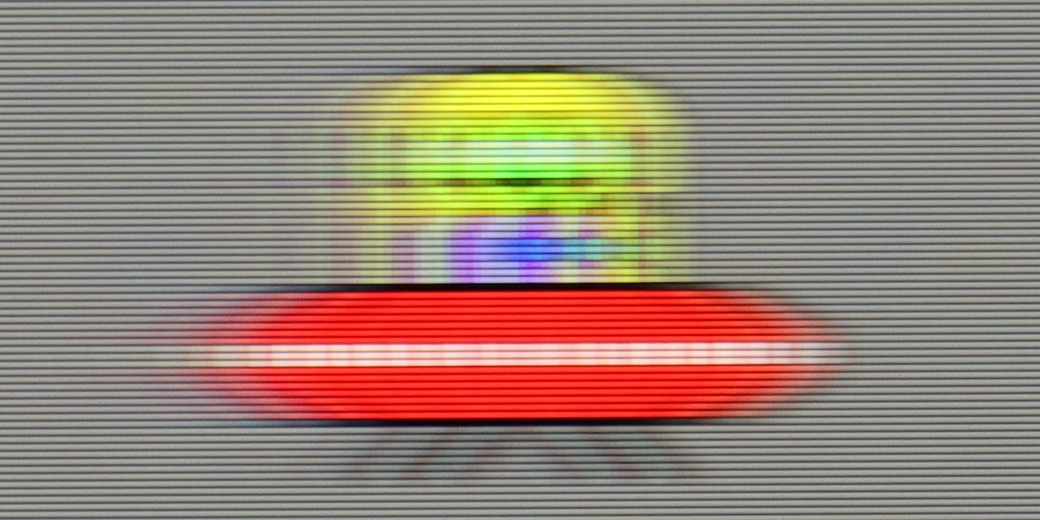
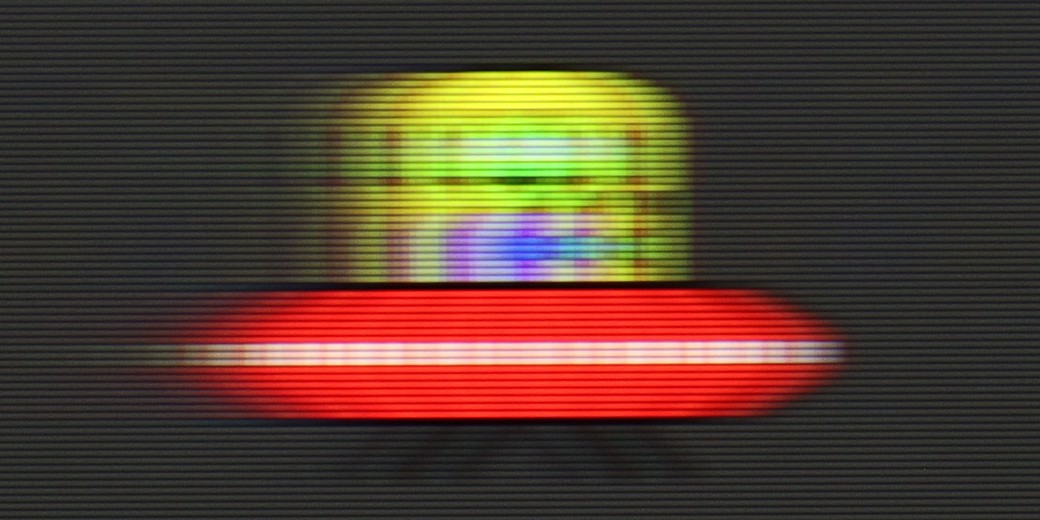
To start off, it’s worth noting that the model we tested in the 55-inch size, along with the 65, 75, and 85-inch versions, is equipped with a 120 Hz panel. Unfortunately, the 43 and 50-inch variants of this series only offer 60 Hz panels, which is worth considering when making a purchase. In terms of improving motion fluidity, the TV offers a feature called “Image Clarity.” This is a classic motion smoother that gives users the ability to adjust using two sliders:
Blur Reduction – this controls image sharpening during dynamic scenes. The higher the value, the less blurring occurs during fast camera moves or moving objects. However, setting it too aggressively can make the image look unnatural and resemble a “soap opera.”
Judder Reduction – this slider affects the smoothness of frame playback, especially in materials with lower frame rates, such as movies (24 fps). Higher settings can smooth out motion but can also lead to excessive “plasticity” of the image.
Both sliders operate on a scale from 0 to 10, allowing for precise adjustment of the effect to personal preferences. It’s a good idea to experiment with the settings to find the perfect balance between fluidity and a natural look for the image. We recommend setting them as shown in the picture.
Motion smoothness has never been a strong point of televisions equipped with 60 Hz panels, and the Bravia 3 is no exception. Nevertheless, Sony has included something that may appeal to those more sensitive to the way images are displayed. I'm talking about the proprietary motion smoother, Motion Flow, which gives the user plenty of adjustment options. With it, one can make the image smoother, almost theatrical, or stick to a more cinematic style with characteristic judder that many people simply associate with a filmic atmosphere. These functions work with content at lower frame rates, such as films and series recorded at 24 or 30 frames per second, which is the material we deal with on a daily basis. This is precisely where the motion smoother proves to be one of the most important features in everyday TV usage, and here, the Bravia 3 performs really decently.
Console compatibility and gaming features
8.8/10
4/10
- ALLM
- VRR
- VRR range48 - 120Hz
- Dolby Vision Game Mode
- Correct implementation of HGIG
- 1080p@120Hz
- 1440p@120Hz
- 4K@120Hz
- Game bar

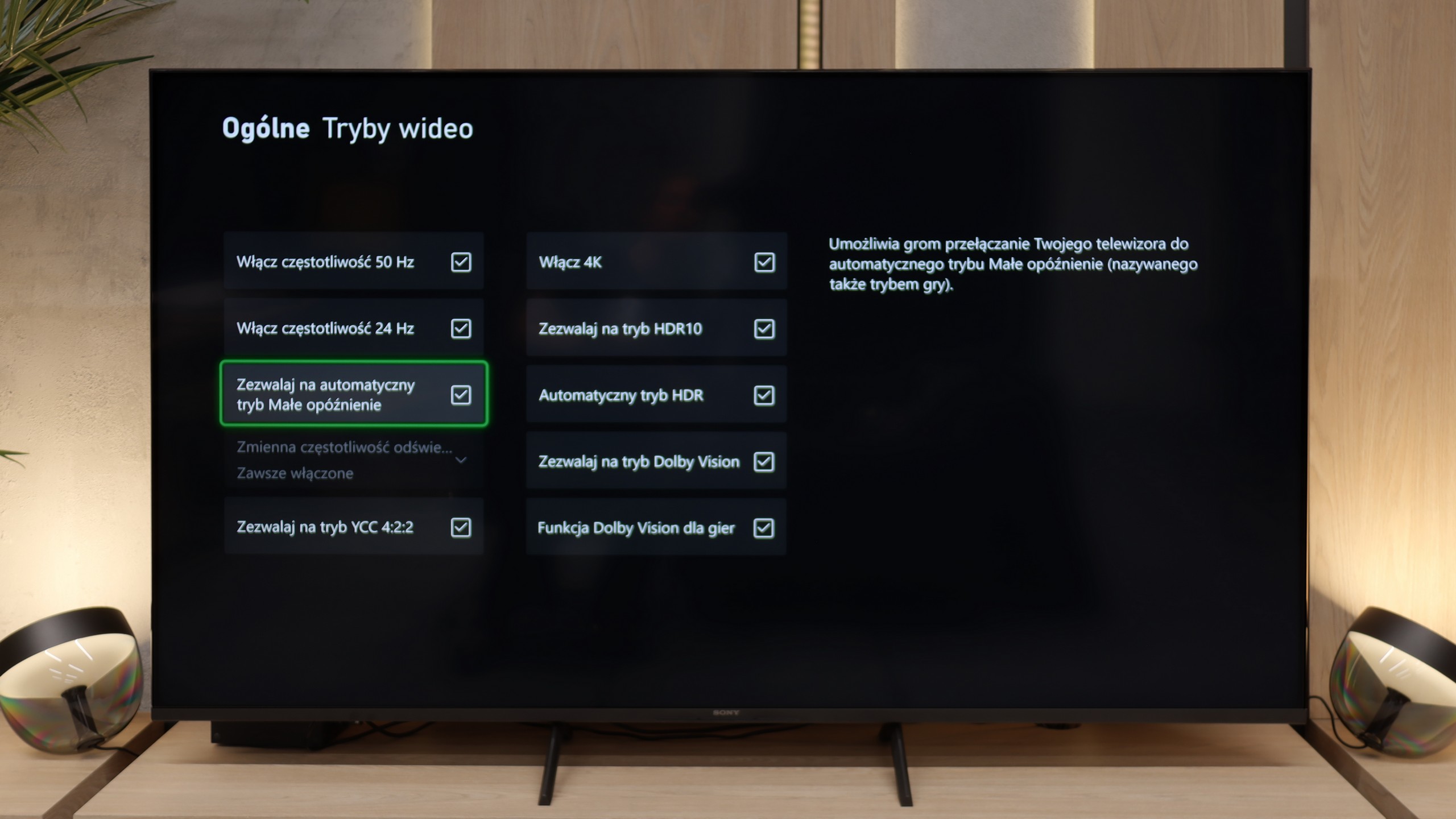

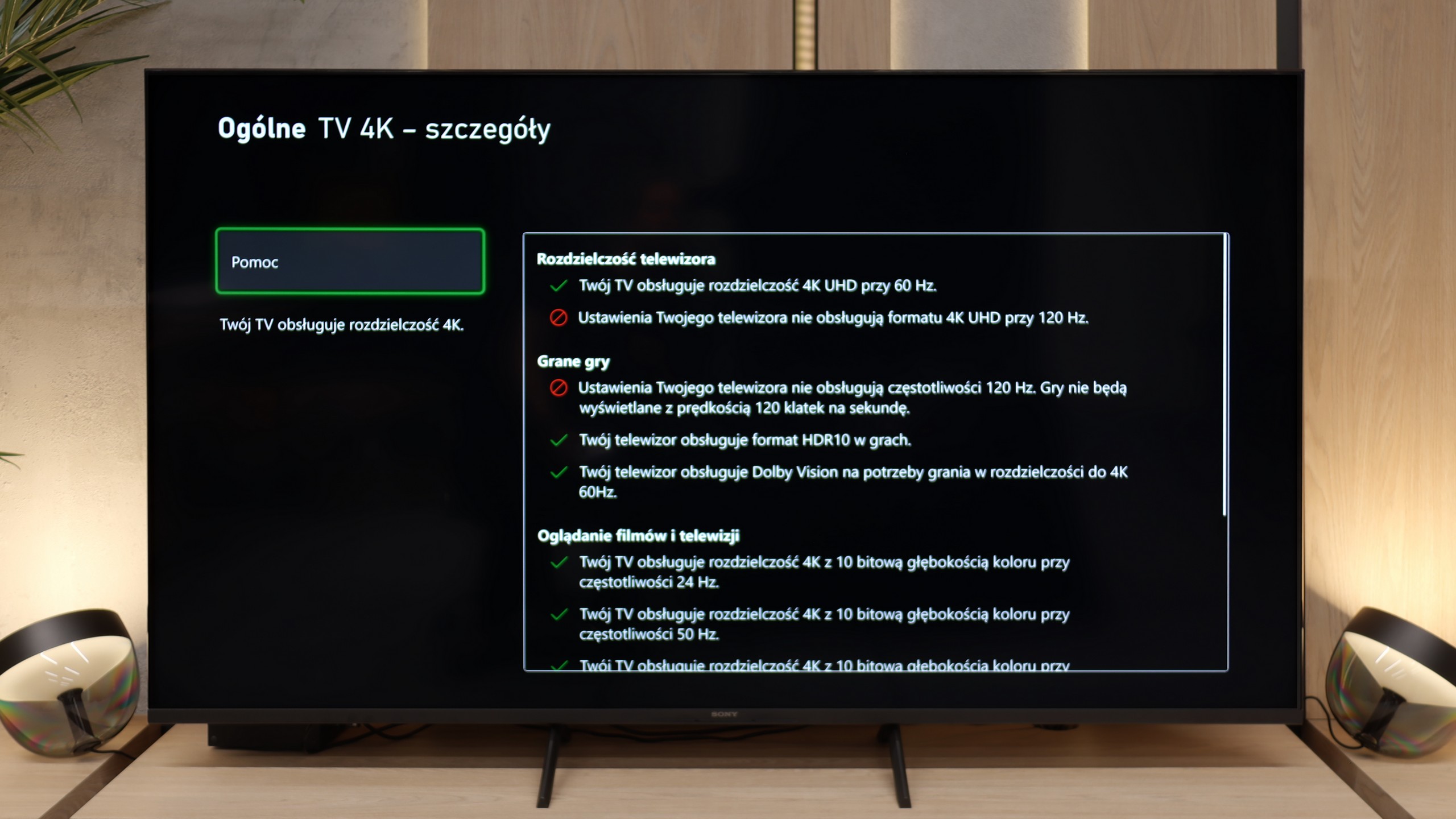

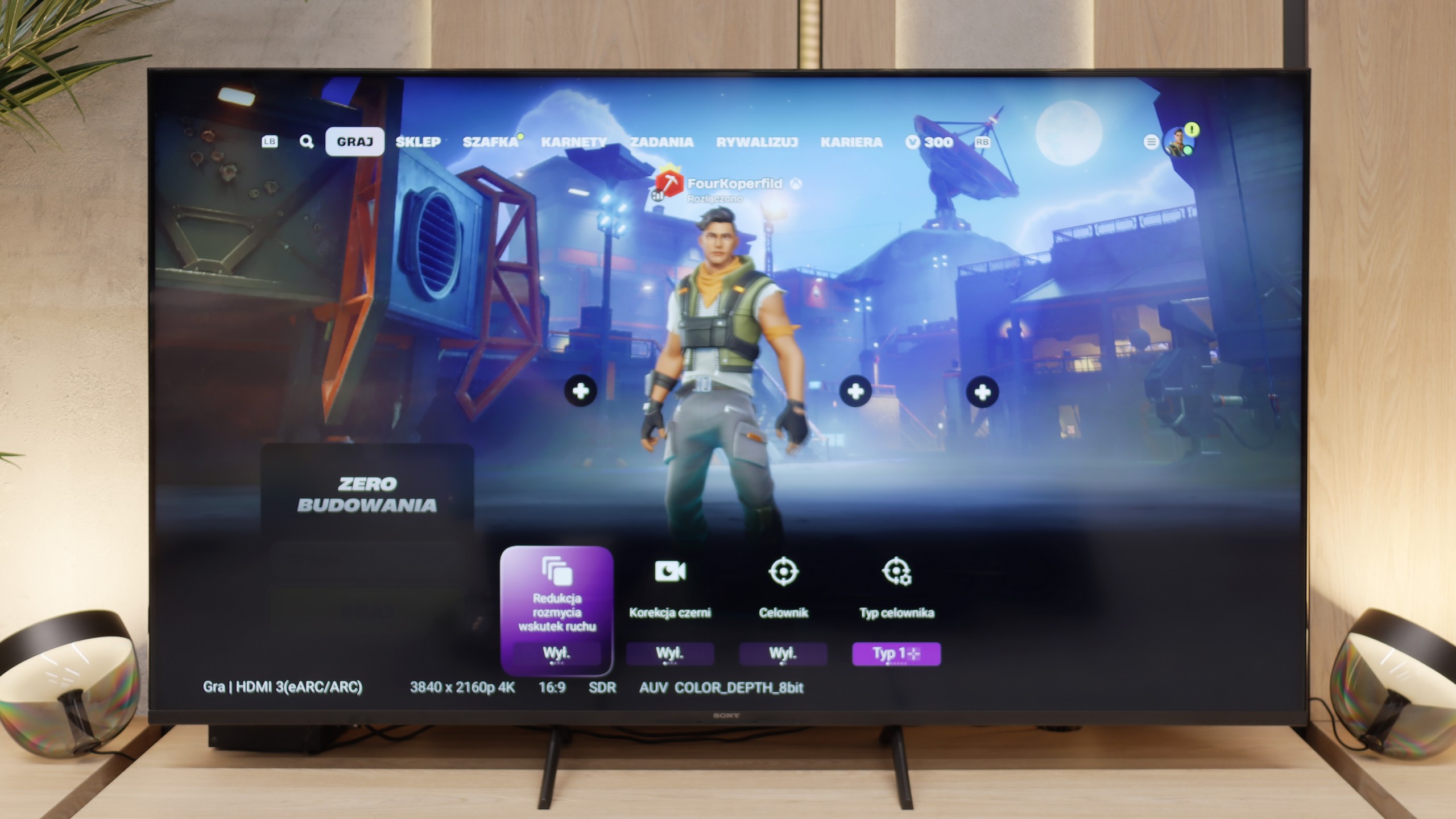

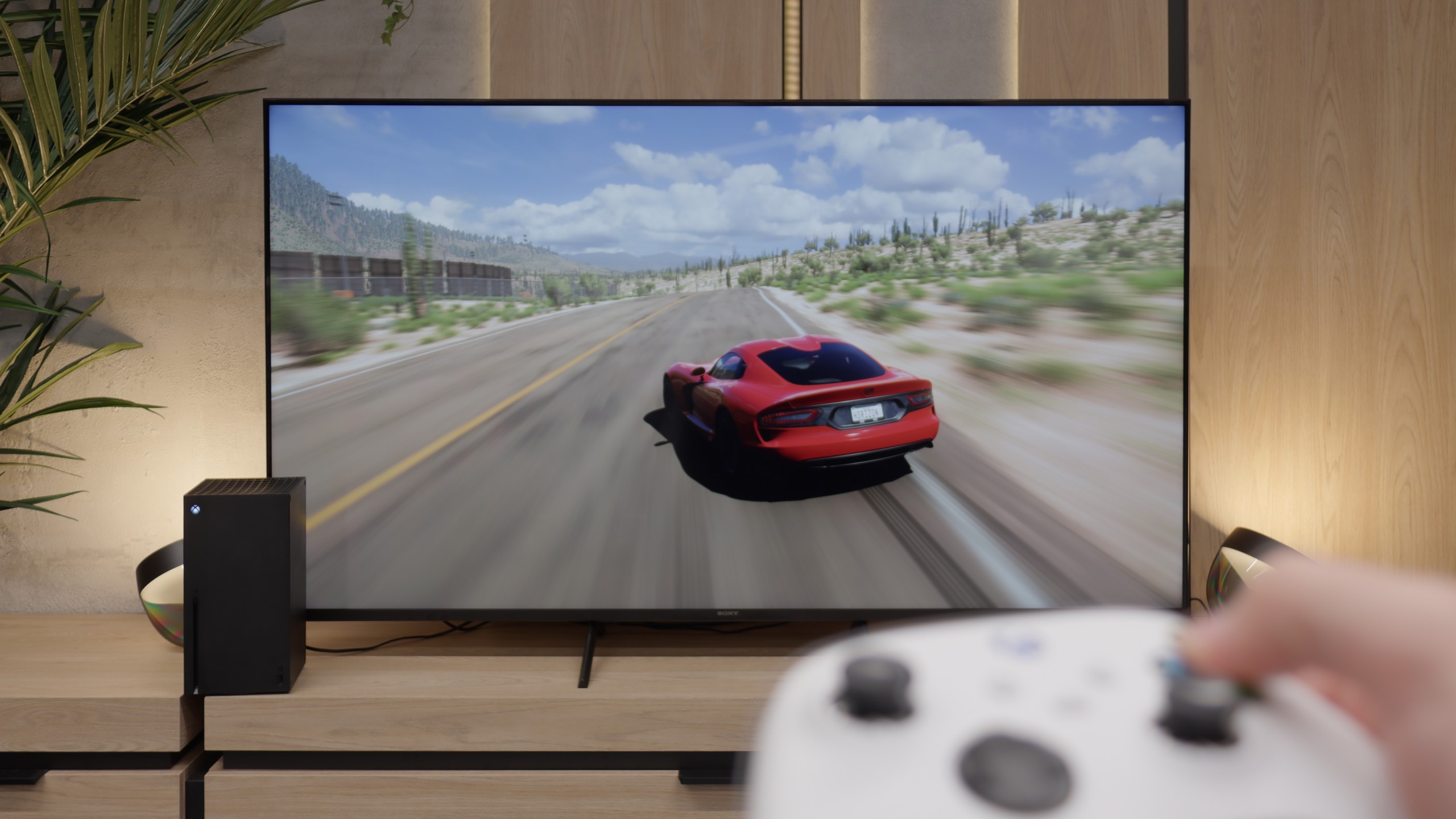
The Frame LS03D in the 2024 version is equipped with four HDMI ports, but only one supports the 2.1 standard with a bandwidth of 40 Gb/s. This is important information if we plan to connect more than one device that requires a 4K@120 Hz signal – for example, two consoles or a console and a gaming PC.
In terms of features for gamers, The Frame truly has a lot to boast about. We have ALLM (Auto Low Latency Mode), VRR (Variable Refresh Rate) and HGiG. It’s worth mentioning that HGiG has been very well implemented here, which is particularly important as the television does not support Dolby Vision in games (which is only available on Xbox consoles). In this case, HGiG turns out to be a better standard for gaming.
Samsung hasn't forgotten about features that enhance the gaming experience. Game Bar is an expanded panel for gamers that allows quick adjustment of screen settings without having to dig through the television menu. We can even change the aspect ratio from 16:9 to the panoramic 21:9, which can be a significant advantage for some gamers.
However, Samsung's biggest ace up its sleeve is the Game Motion Plus feature. This is a special smoother dedicated to games that adds additional frames of animation without significantly affecting input lag. The effect is really noticeable – the image seems much smoother, which will be particularly appreciated by fans of dynamic titles.
In summary – Samsung The Frame LS03D is a television that offers a solid set of features for gamers. Although the limitation to one HDMI 2.1 port may be a downside, the rest of the solutions make gaming on this television a truly enjoyable experience.
Bravia 3 is not gear for e-sports enthusiasts or fans of late-night marathons with a controller in hand. The lack of 120 Hz refresh rate and HDMI 2.1 ports shuts down the conversation before it even gets started. This is a TV for casual gamers who, after work, will fire up FIFA or racing games, not for someone who measures every frame in a spreadsheet. Nonetheless, Sony has thrown in a few nice additions so it’s not completely sparse. ALLM works as it should, automatically switching the TV to game mode (low latency). We even find a simple Game Bar here, which is clear and intuitive. However, the biggest curiosity here is the PlayStation Portal app. Thanks to this, you can launch PS5 games wirelessly and see them right on the TV screen. It sounds great, but it only takes a few minutes to feel significant lag. In our opinion, it's more of a showcase of capabilities than something that can be used day-to-day. If someone really wants to game, it's better to plug the console in with an HDMI cable and forget about wireless issues.
Input lag
10/10
10/10
SDR
HDR
Dolby Vision
When it comes to latency, The Frame LS03D truly impresses. 13 ms with 60 Hz content and 8 ms at 120 Hz are results that will satisfy even the most demanding gamers. Such low values make the reactions to controller movements almost instantaneous. In dynamic games like shooters or racing, every fraction of a second counts – here, Samsung LS03D performs superbly.
Here, the Bravia 3 shows its best side. Latency drops below 12 milliseconds in almost every resolution and mode, so the response to controller movements is instantaneous and there’s no sense of delay. It feels like the console and the television are speaking the same language, without unnecessary pauses and hesitations. The Dolby Vision Gaming mode deserves special attention. In its predecessor, the X75WL model, using this feature was simply a nightmare – input lag could reach over 100 milliseconds, which effectively ruined the enjoyment of gaming. In the Bravia 3, this issue has been completely eliminated.
Compatibility with PC
7.6/10
6/10

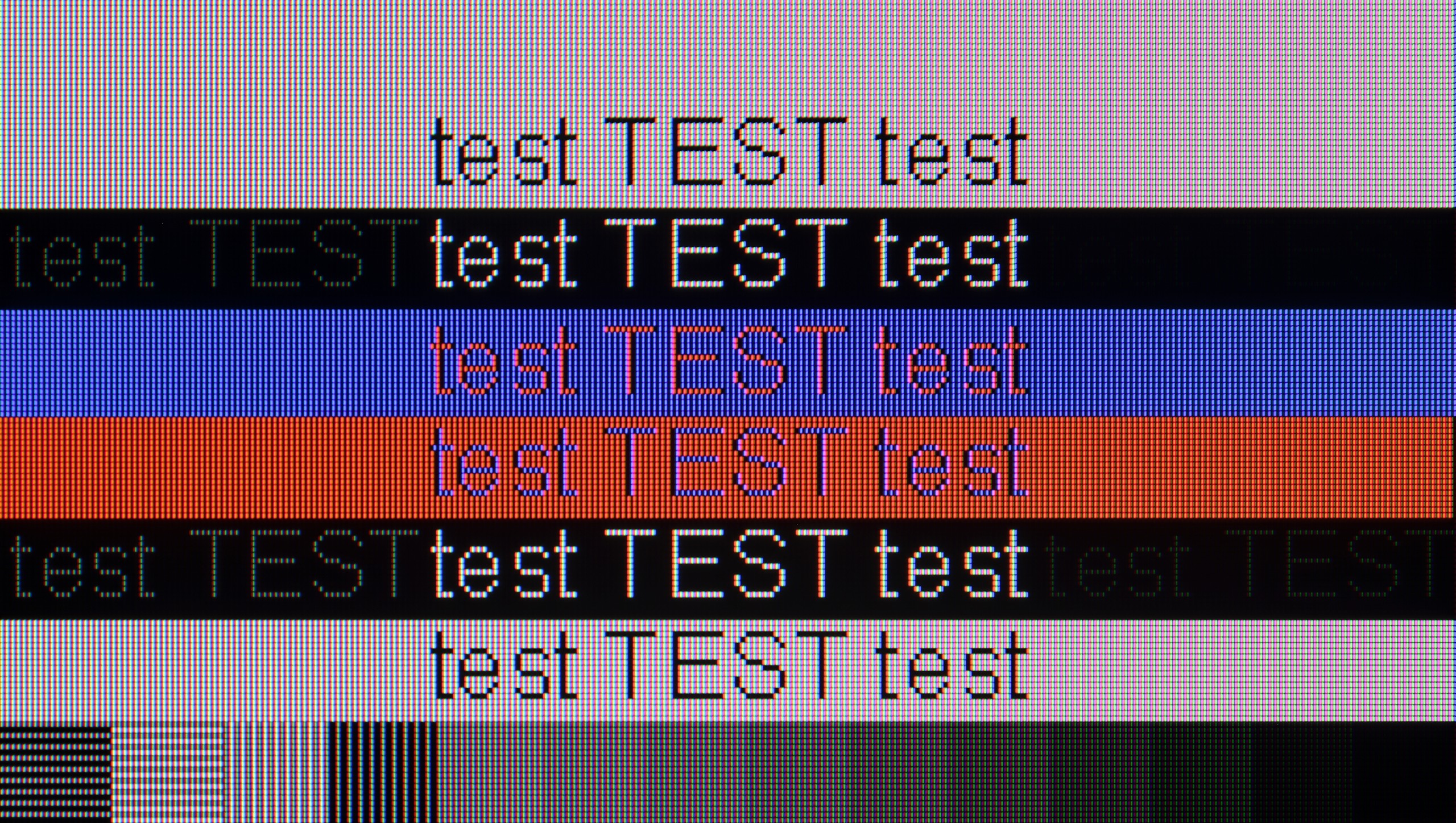
Using a computer on The Frame is truly a pleasant experience. The fonts are clear and well-reproduced thanks to the 4:4:4 chroma support. There's no blurring or fuzziness that often occurs in cheaper TVs. Of course, if someone is really scrutinising small texts, they might notice minimal imperfections, but that’s really a minor issue that doesn’t interfere with daily tasks. It's also suitable for gaming on PC. The 120 Hz panel, support for G-Sync, and really low input lag ensure that games run smoothly and without delays.
The IPS panel combined with properly functioning 4:4:4 chroma support means that the readability of fonts is at an excellent level. Letters appear sharp regardless of the background colour or content, so working with documents or browsing websites doesn't strain the eyes. In this role, the TV easily deserves a very good, if not excellent, rating, as few models in this price range perform as well. However, if we look at the Bravia 3 from a PC gamer’s perspective, the picture isn’t as rosy. We won't find G-SYNC or Free Sync frame syncing with graphics cards or high refresh rates, so the TV isn’t the best choice for dynamic computer games. However, as a monitor for work, whether in a home office or a student room, it performs excellently, and in that respect, it's really hard to criticize.
Viewing angles
3.3/10
6.6/10
The viewing angles on the Samsung The Frame LS03D are average, which is typical for a VA panel. And here lies a bit of a hitch – this television is supposed to serve as a display for images and artworks, which are not always viewed straight on. When viewed at an angle, colours begin to lose their intensity, and blacks turn into shades of grey. It isn’t a level that completely ruins the viewing experience, but if the television is set up in a spot where it will often be watched from the side, the effect may be noticeable. It’s a shame, because better viewing angles in a television designed for such a purpose would be a great advantage.
Thanks to the IPS matrix used, colours do not lose intensity as quickly as with screens based on VA panels. Even when watching television in larger groups, when some people sit at an angle, the image remains clear and does not appear washed out. Of course, it isn't at the level offered by OLED organic matrices, where the image looks nearly the same from almost any position, but for an LCD television, the viewing angles in the Bravia 3 are among the best. This provides a sense of comfort and freedom, especially in larger living rooms or during family screenings, where it's difficult for everyone to sit directly in front of the screen.
TV efficiency during daytime
6.5/10
4.9/10

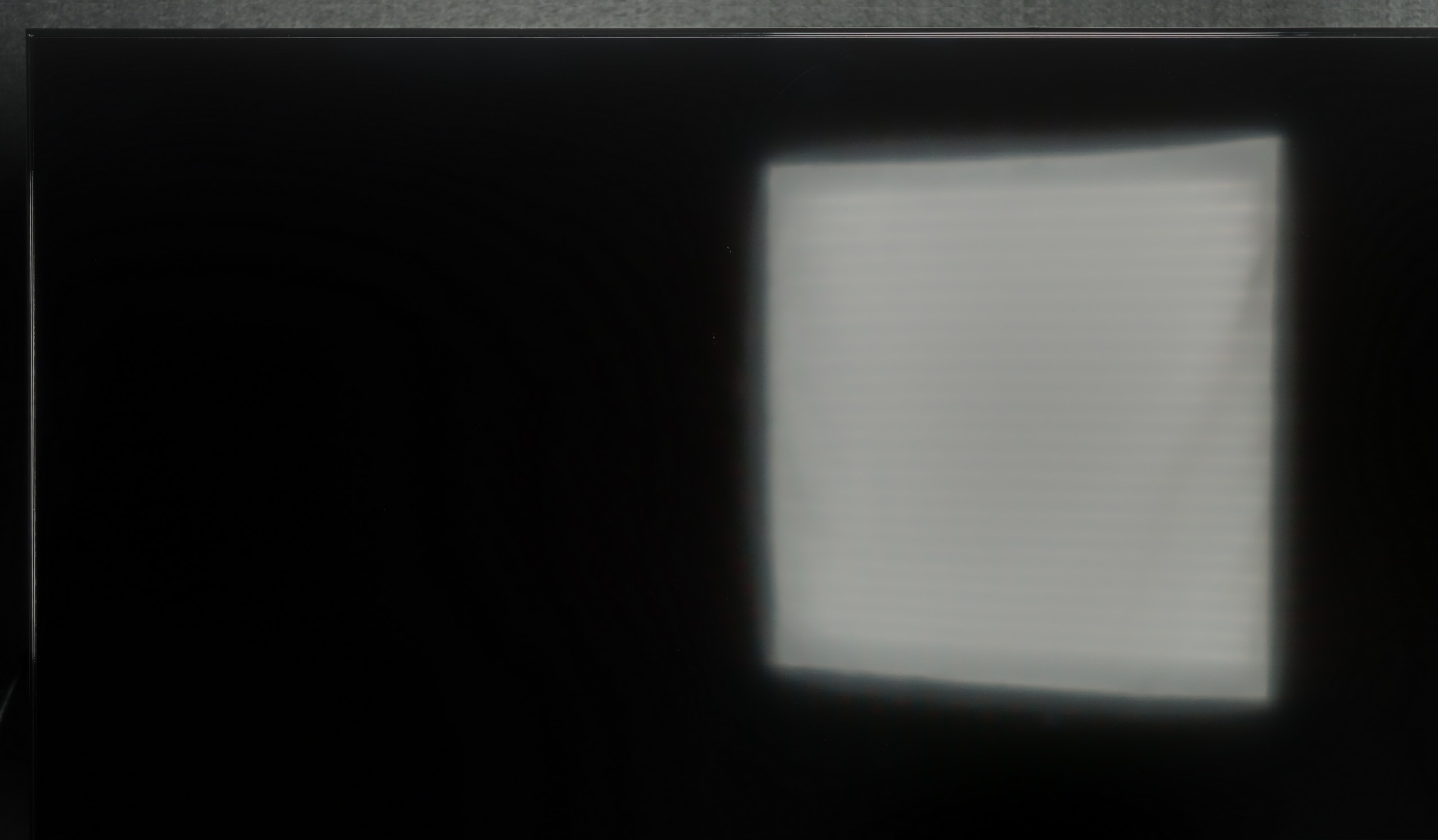

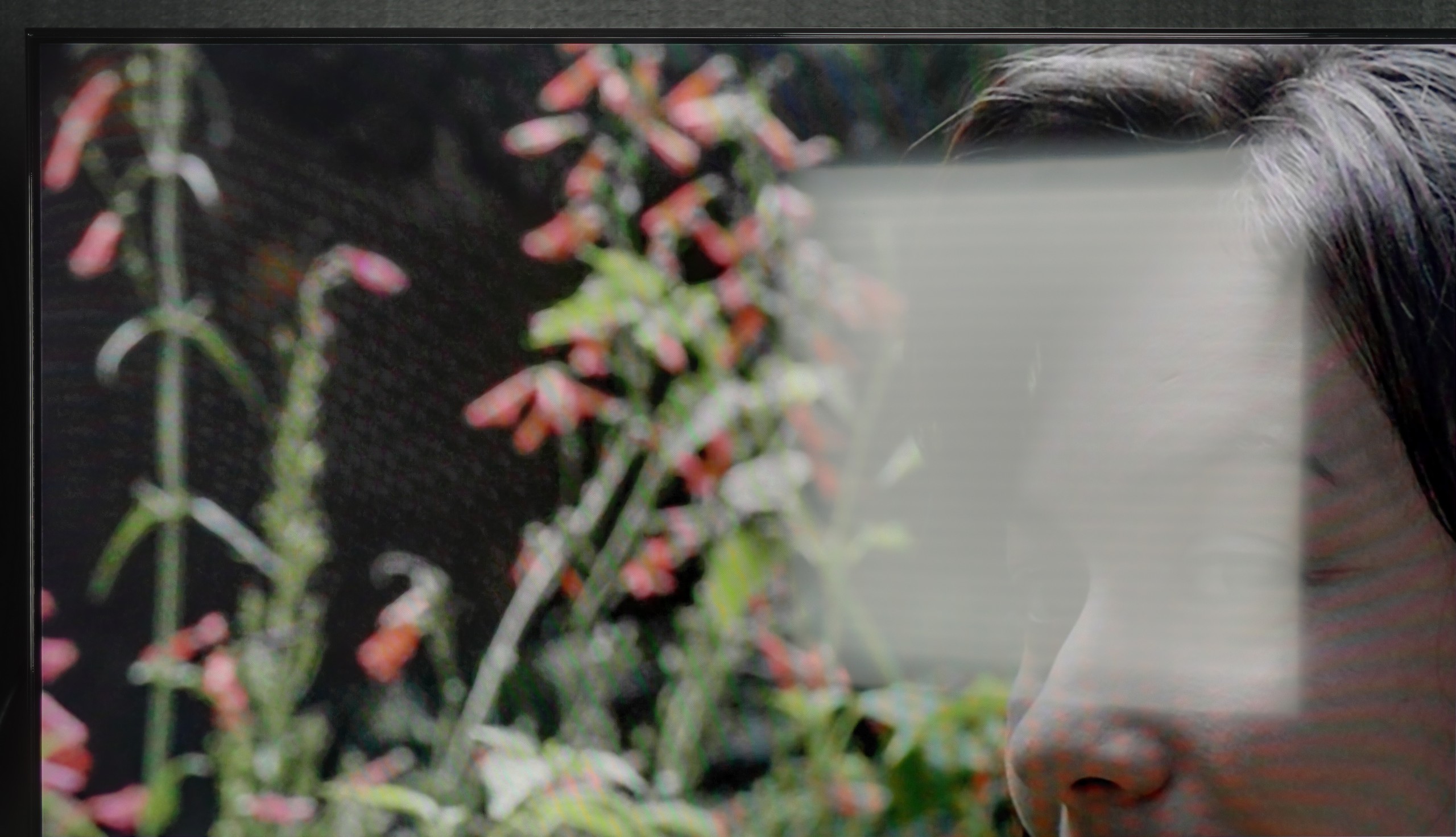
Matrix brightness
Average luminance SDR
SONY BRAVIA 3: 337 cd/m2
Samsung The Frame LS03D : 645 cd/m2
Samsung The Frame has been equipped with a matte panel that effectively manages to reduce direct light reflections. This means that even in a brightly lit room, the image remains clear, and reflections do not interfere with viewing. Of course, as is often the case with matte finishes, there are trade-offs – colours lose some of their intensity, and black appears more washed out during the day. Fortunately, the television compensates for this with a brightness level of 650 cd/m². This ensures that the image is bright, sharp, and easily visible even in a well-lit room.
Bravia 3 performs quite well in daylight. The satin coating on the panel effectively reduces reflections, and the colours do not lose their vibrancy when stronger external light hits the screen. As a result, under typical home conditions, with blinds open or in a living room with a larger window, the picture maintains its clarity. However, it's important to remember that this is not a high-brightness TV. The Bravia 3 cannot compete with brighter models, so in very sunny rooms, there are moments when the screen simply doesn't stand out against the intense light. In normal conditions, it handles things without any issues, but in more challenging scenarios, don't expect miracles.
Details about the matrix
Subpixel Structure:

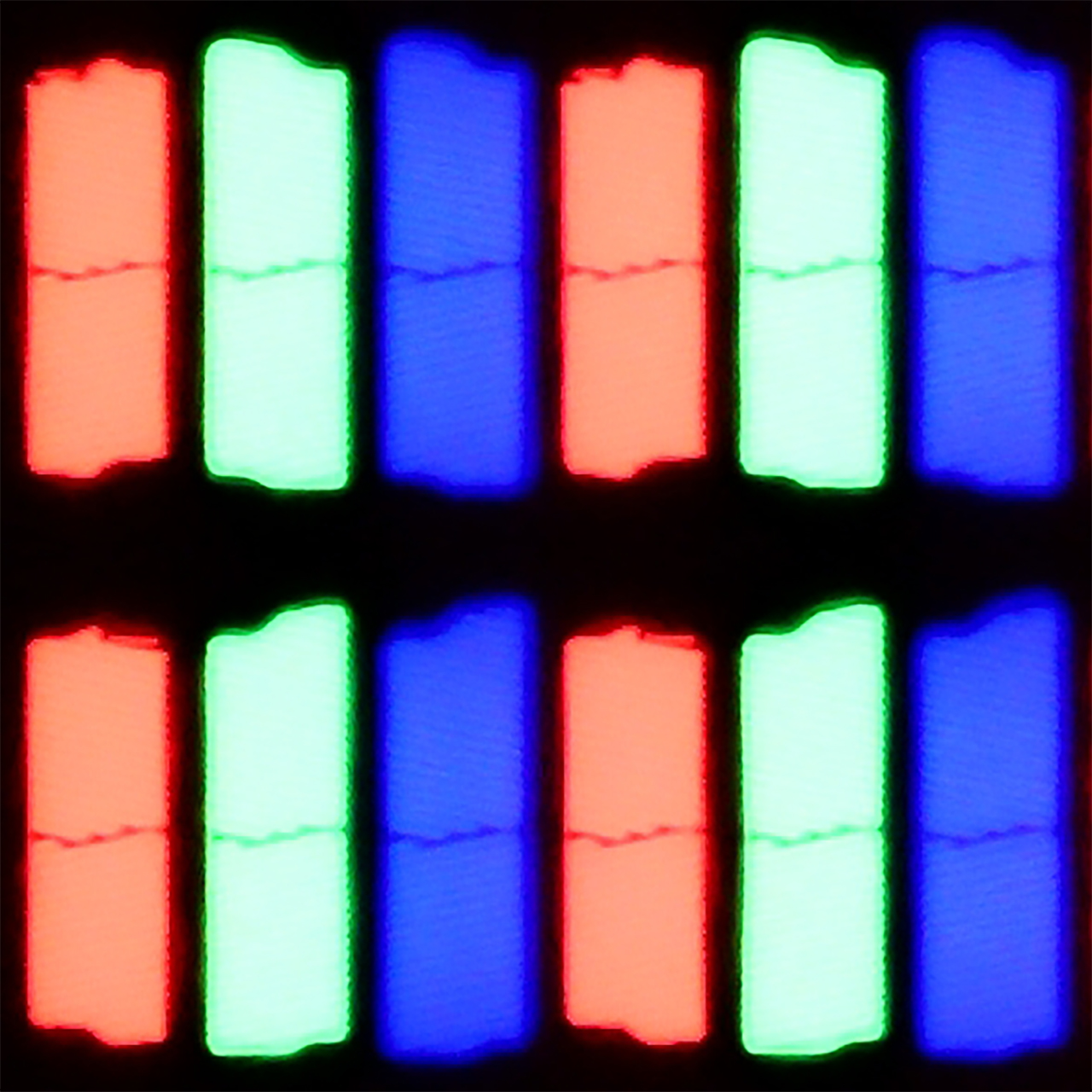
Panel uniformity and thermal imaging:

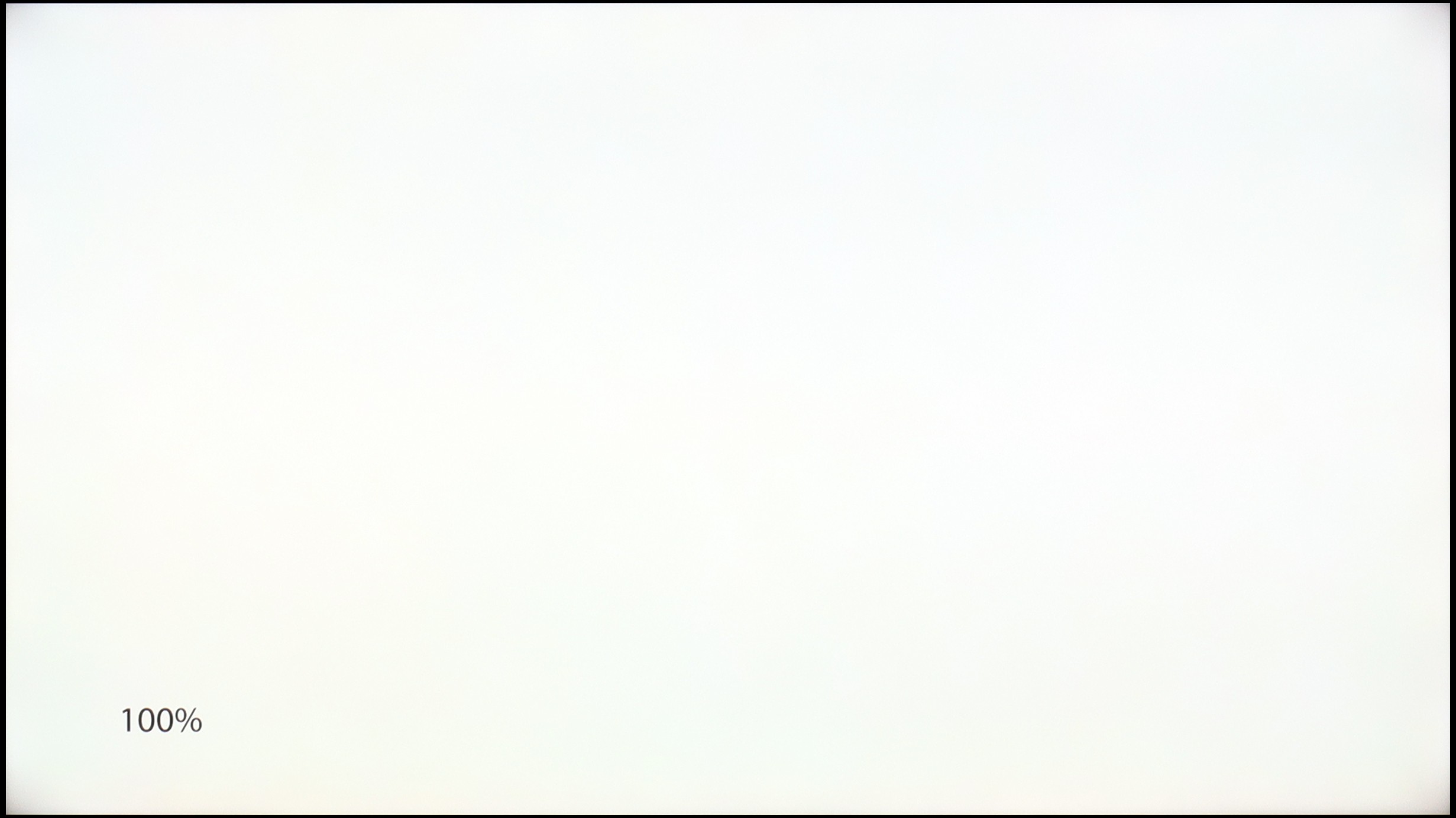
Samsung The Frame LS03D
SONY BRAVIA 3
TV features
7.8/10
6.6/10
- HDMI inputs3 x HDMI 2.0, 1 x HDMI 2.1 40Gbps4 x HDMI 2.0, 0 x HDMI 2.1
- OutputsToslink (Optical audio), eARC (HDMI), ARC (HDMI)Toslink (Optical audio), eARC (HDMI), ARC (HDMI)
- Network InterfacesWi-Fi 2.4GHz, Wi-Fi 5GHz, Ethernet (LAN) 100MbpsWi-Fi 2.4GHz, Wi-Fi 5GHz, Ethernet (LAN) 100Mbps
- TV receptionDVB-T, DVB-T2, DVB-S, DVB-S2, DVB-CDVB-T, DVB-T2, DVB-S, DVB-S2, DVB-C
Classic features:
- Recording to USB (terrestrial TV)
- Recording programming
- Picture in Picture (PiP)
- RF remote control (no need to aim at the screen)
- Backlit remote control
- Teletext
- Audio only mode
- Bluetooth headphones support
- Simultaneous Bluetooth headphones & TV audio
Smart features:
- AirPlay
- Screen mirroring (Windows Miracast)
- Voice search
- Voice search in native language
- Ability to connect a keyboard and mouse




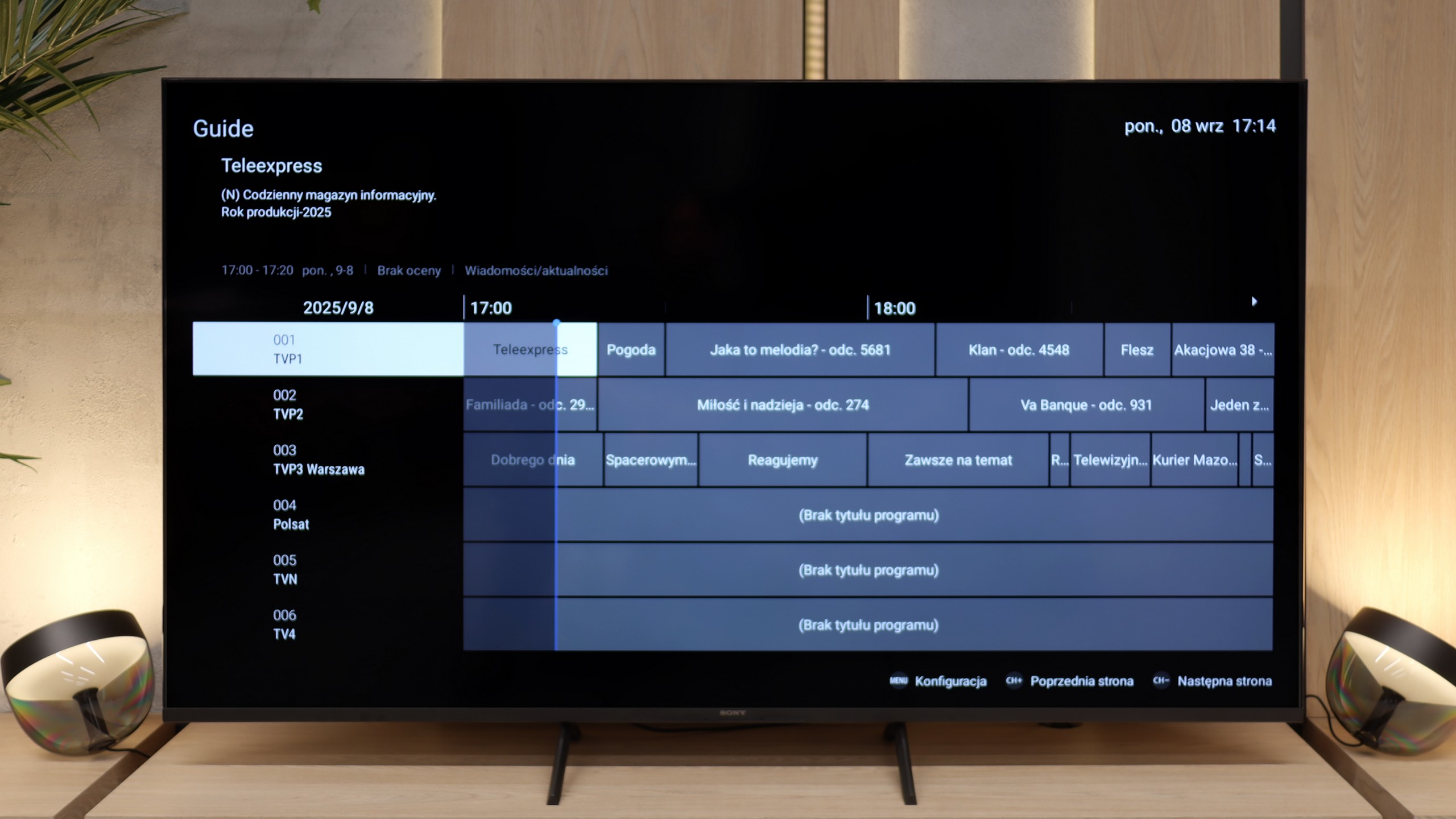
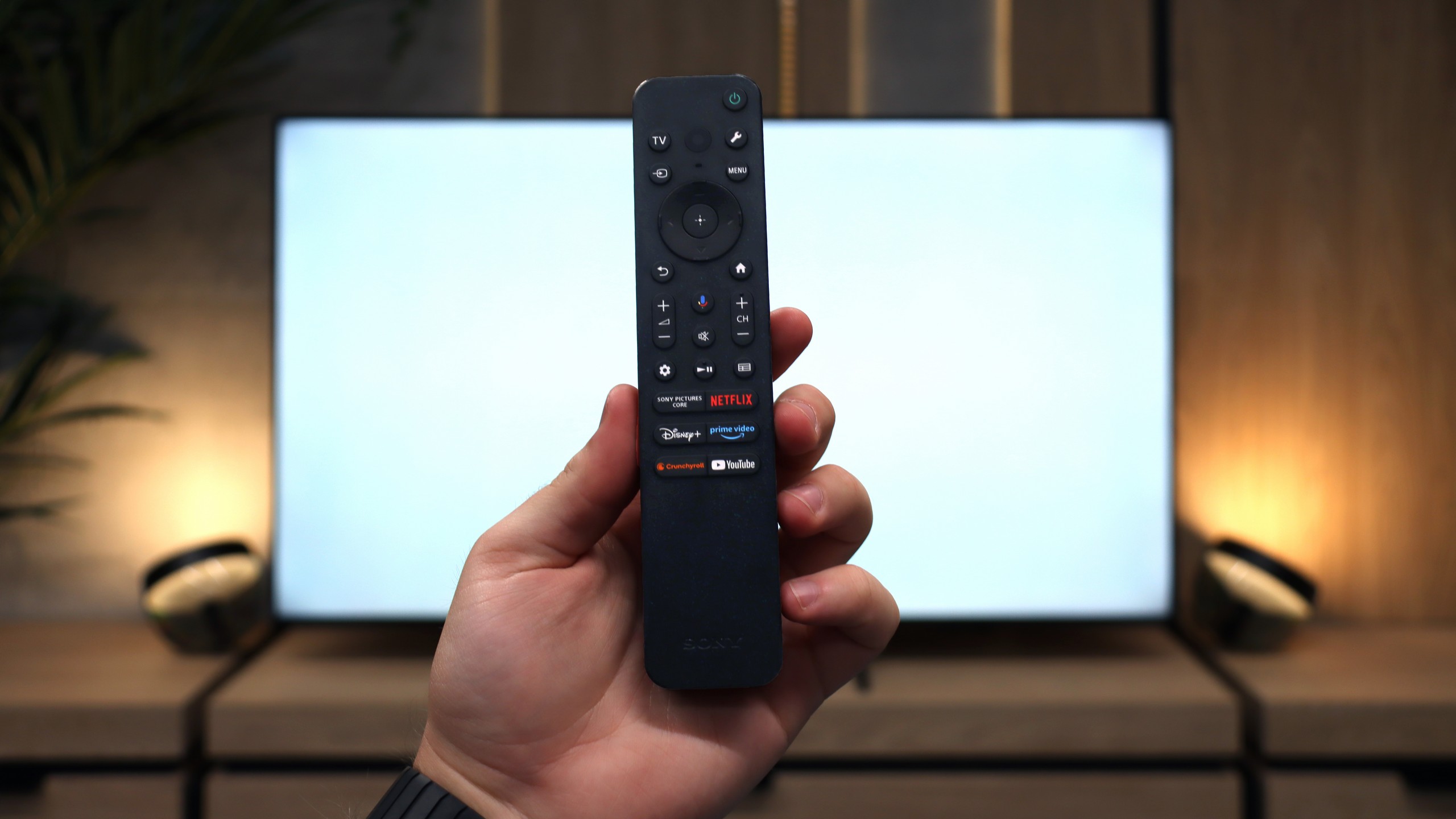
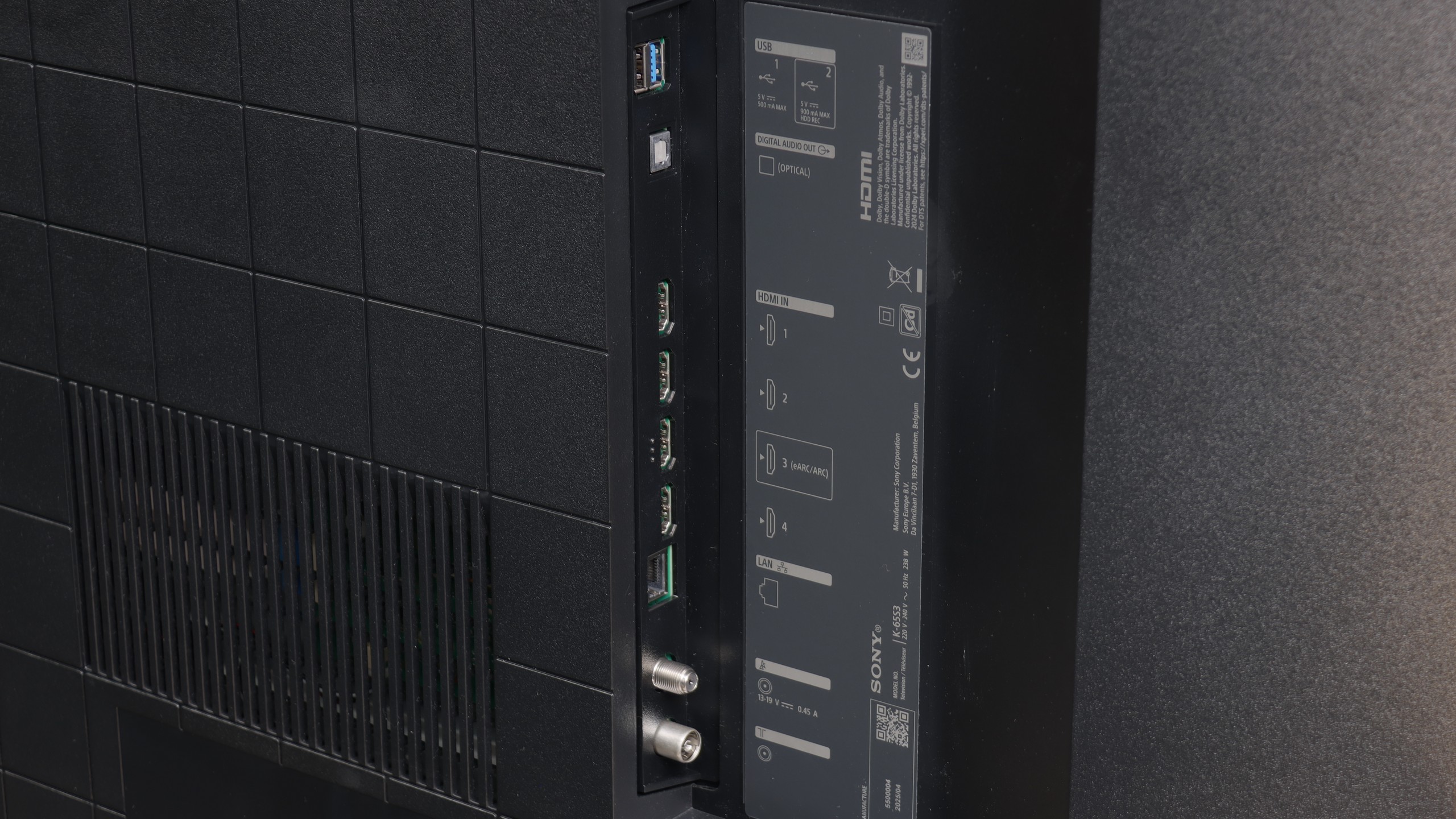
Samsung The Frame LS03D is a television that stands out from other models and is difficult to describe in a conventional way. Of course, it has all the standard Smart TV features thanks to the Tizen system. The system is responsive, comprehensive, and offers a wide selection of applications. The remote control supports voice commands in Polish, and we can connect additional devices via Bluetooth – just like in many other televisions. But that's not the essence of this model.
The biggest strength of Samsung The Frame is its design. The "Art" mode allows you to display thousands of high-resolution images, which, combined with the matte screen, look truly exceptional. The effect is surprisingly realistic and hard to compare to any other television.
The frames may not be the thinnest on the market, but they can be customised in terms of colour and style to perfectly match the interior. (Sold separately) And although the frames themselves are not ultra-thin, the entire construction is sleek and elegant. The wall mount, which is included (valued at about 400 PLN), is also worth noting. It allows the television to be mounted almost flush against the wall, with no gap, which further emphasises the "picture" effect.
And what about the cables? Samsung thought of that as well. The Frame is equipped with a One Connect module – this is an external box that connects all devices. Only one nearly invisible cable goes to the television, which carries both the signal and power. The box can be easily hidden in a cabinet or behind furniture, ensuring that nothing disrupts the aesthetic of the interior.
Samsung The Frame LS03D is more than just an ordinary television – it is a thoughtfully designed decorative element that combines modern Smart TV functionality with exceptional design and practical solutions. Although it lacks typical functions such as USB recording or PiP, it is not a model created with a conventional approach to television in mind. LS03D the frame is a television that is easy to love for its innovation, originality, and how well it fits into any interior.
Smart TV Features
The biggest advantage of the Bravia 3 in everyday use is the presence of the Google TV system. Thanks to this, we have access to one of the largest libraries of apps and streaming services, so no matter if someone mainly uses Netflix, Disney+ or smaller platforms, everything is at their fingertips. The Google voice assistant also worked very well, able to respond to our commands quite "smartly". The Google TV system should, in theory, operate very smoothly, as Sony has been implementing it better than many cheaper competitors for years. Unfortunately, in the case of the Bravia 3, it isn't as nice as we would have hoped. During testing, we noticed some slight stutters in the interface, and some features, such as screen mirroring, simply refused to cooperate. One could get the impression that the processor in this model sometimes struggles to manage the demanding system, and not everything works as smoothly as we would expect.
Classic Features
Sony, even in its cheapest series, manages to remind us of its experience with various users. The set comes with two remotes. The first is modern and minimalist, with a small number of buttons, which works great when using apps and Google TV features. The second is a classic remote with a richer set of buttons and a numeric keypad, which will be appreciated especially by older individuals used to traditional solutions. This is a nice nod towards different user groups, and it must be said that Sony has solved it very practically. It’s a shame, however, that compared to the X75WL model, the ability to record content from TV tuners to USB memory has disappeared. The manufacturer has completely abandoned this feature, so if someone was attached to it, they unfortunately won't find it in the Bravia 3.
Playing files from USB
9.1/10
9.6/10
Supported photo formats:
Maximum photo resolution:

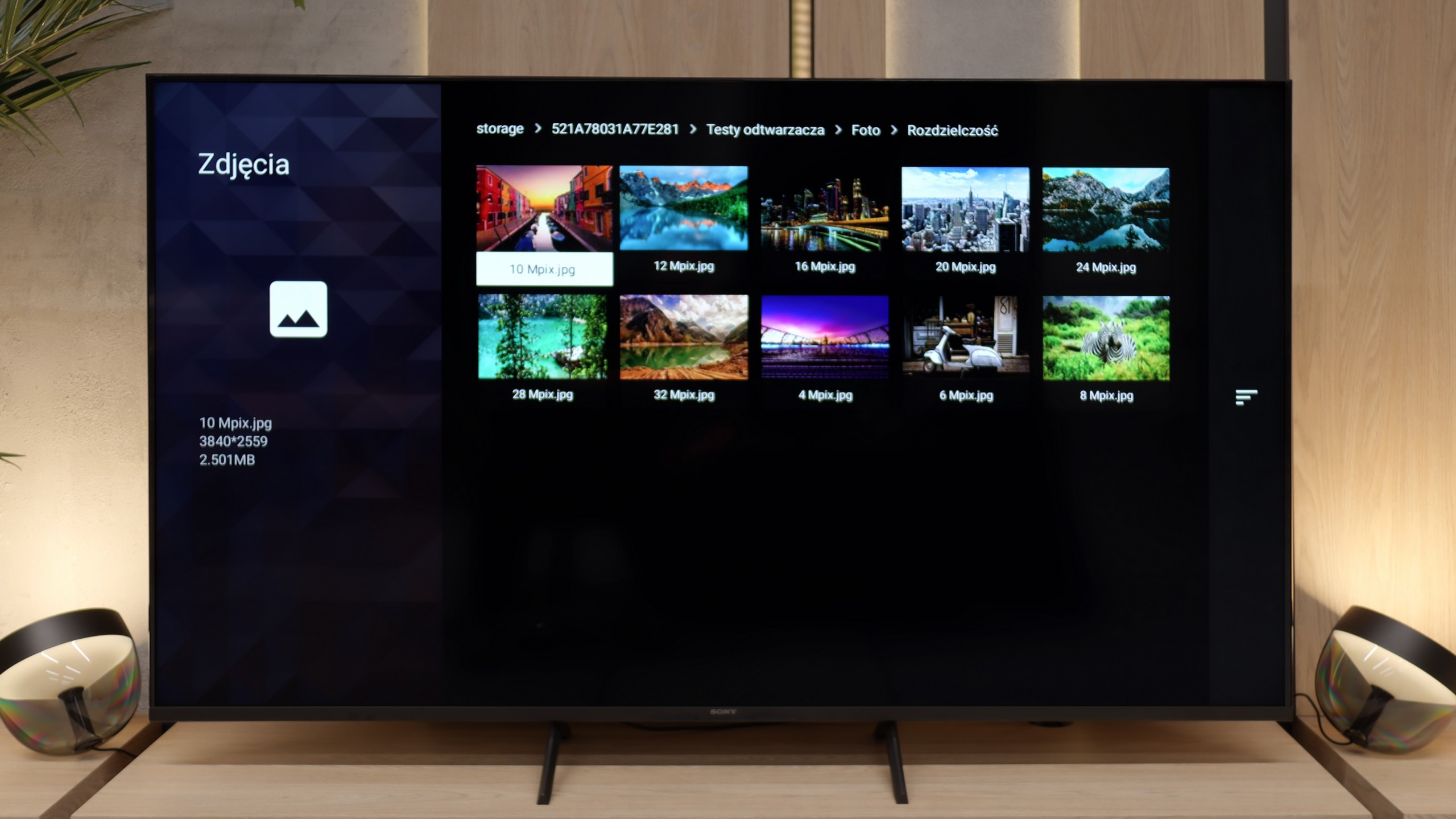
The built-in media player in Samsung The Frame handles most popular video and audio formats without any significant issues. Video files, even those with our added subtitles, play smoothly and without interruptions. The same goes for audio files – there are no major surprises here either. The handling of photo formats is somewhat less impressive. The built-in player has certain limitations and does not support all possible types of graphic files. However, nowadays most people use wireless photo transfer, so for many users this won't be a major problem.
Here Sony has really done an excellent job. The built-in player works quickly and doesn't "fuss" when starting different formats. We didn't need to reach for external applications like VLC, as the TV handled even files that can cause a lot of problems on other models – such as HEIC photos from Apple devices. It's a small detail, but one that shows the manufacturer wanted the user to have a sense of complete convenience. By inserting a movie on a USB stick or photos from a holiday onto an external drive, you can simply plug them in and start watching on the big screen straight away. No fussing, no installing extra software, no searching for workarounds. This is really rare in televisions, and it's fair to say that in this respect, the Bravia 3 truly surprised us pleasantly.
Apps
8.7/10
9.6/10














































Sound
5.8/10
6.5/10
- Maximum volume-88dB
- Dolby Digital Plus 7.1
- Dolby True HD 7.1
- Dolby Atmos in Dolby Digital Plus (JOC)
- Dolby Atmos in Dolby True HD
- DTS:X in DTS-HD MA
- DTS-HD Master Audio
The sound on Samsung The Frame is… well, quite average. The slim design of the TV, while impressive, doesn’t leave much room for decent speakers. As a result, the sound is flat and lacks dynamics – just like most TVs in this category. Samsung is clearly aware of this, as they have a special S series of soundbars designed specifically for their “lifestyle” TV line, which includes The Frame.
Bravia 3 plays in a rather flat manner, but makes up for it with loudness. It will work flawlessly for watching classic television because the dialogues are clear, and the mid-tones are easily audible. This type of characteristic will be particularly appreciated by older users, who primarily care about speech intelligibility. However, if someone expects something more from the sound, like stronger bass or a wider soundstage, it’s worth reaching for a soundbar despite everything. The TV supports modern codecs, including Dolby Atmos and DTS:X, so an external sound system will easily leverage their potential. This ensures that with a relatively modest expense, one can achieve a much fuller and more engaging sound.
Sound Quality Test
No sound test video
Acoustic Measurements
No acoustic data
88dBC (Max)
75dBC


